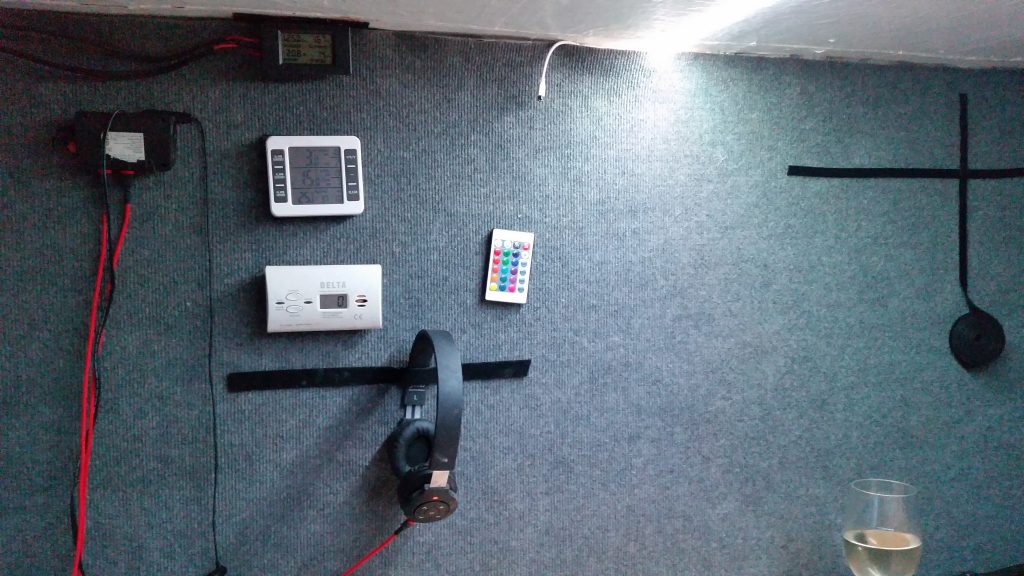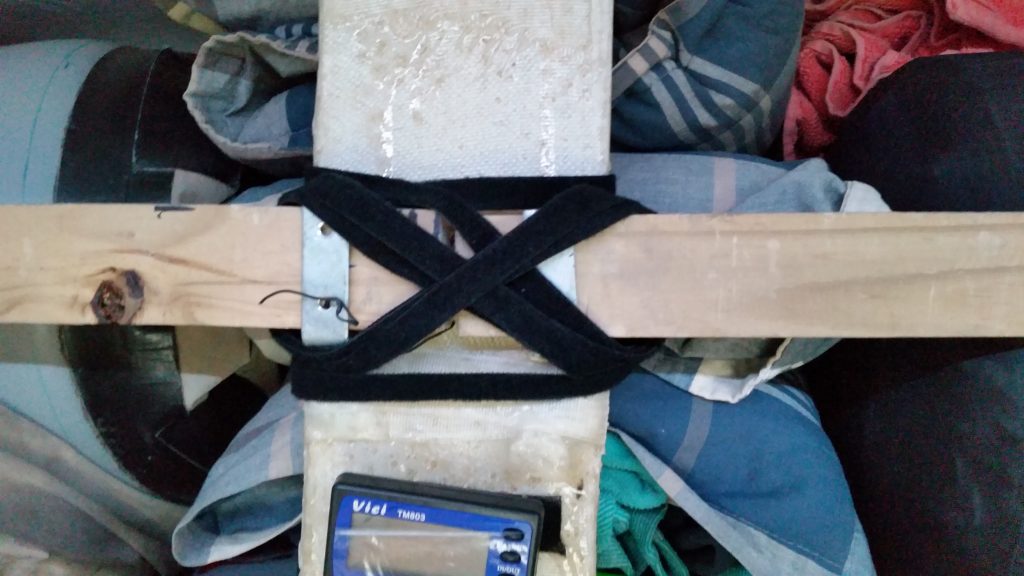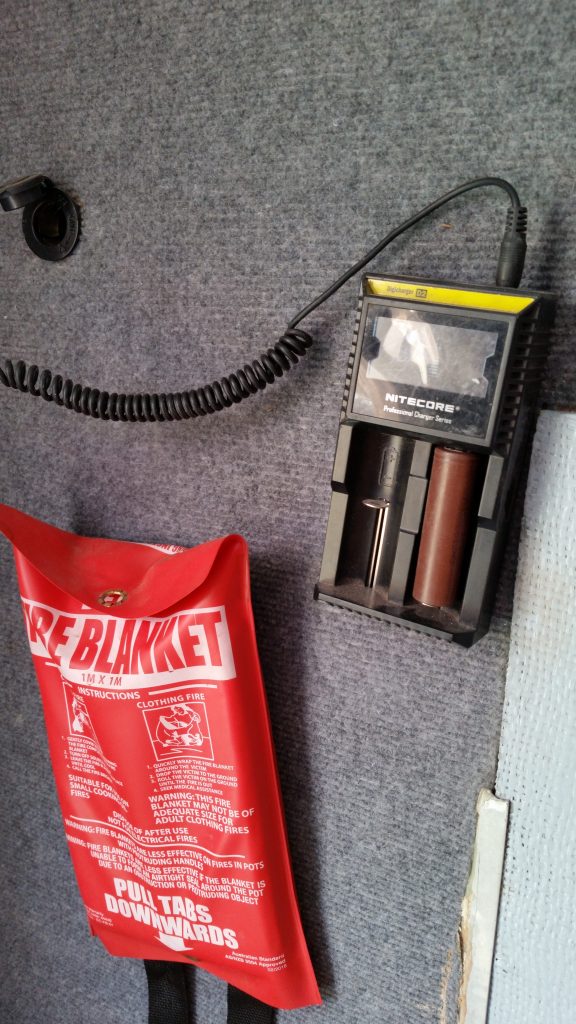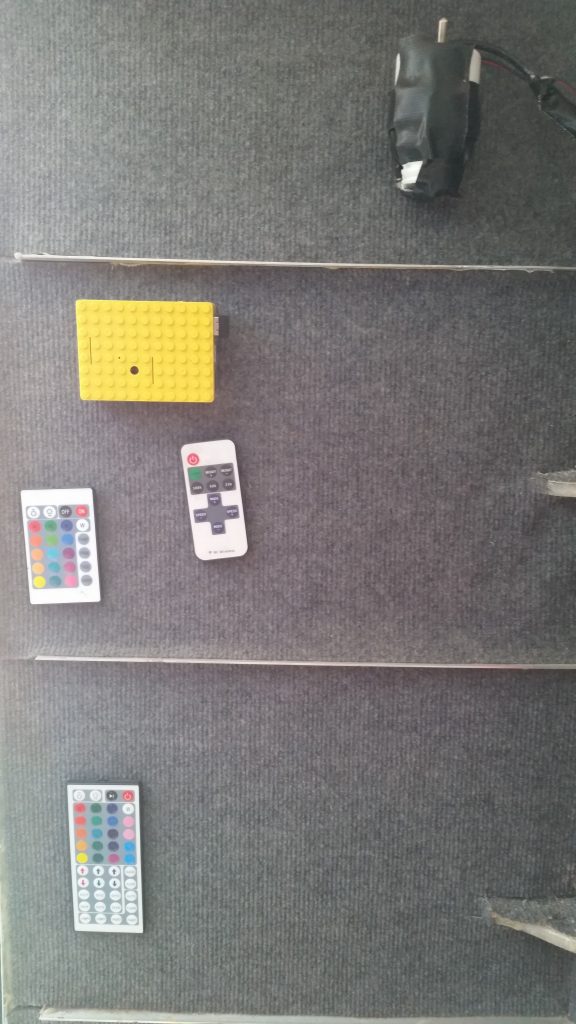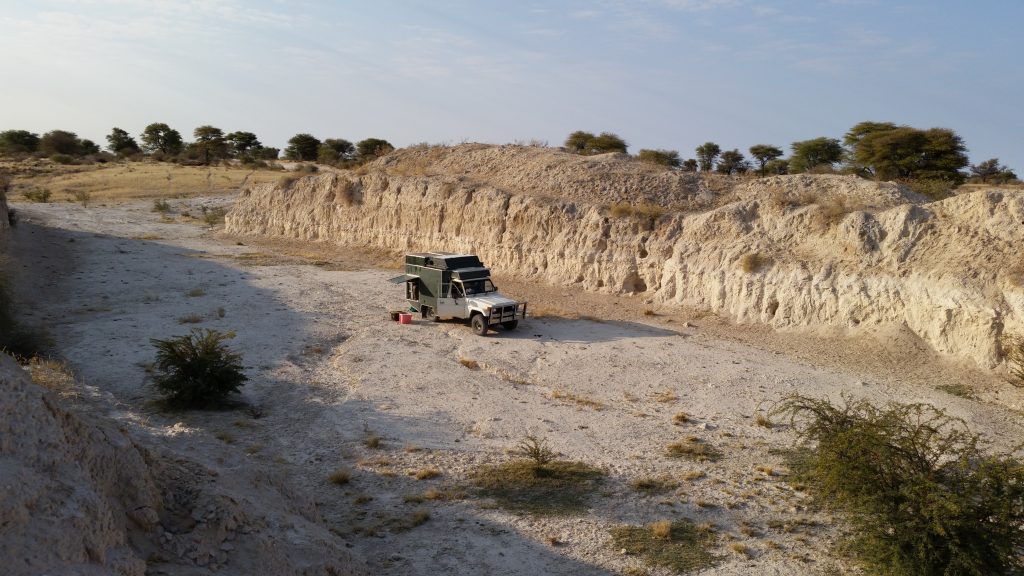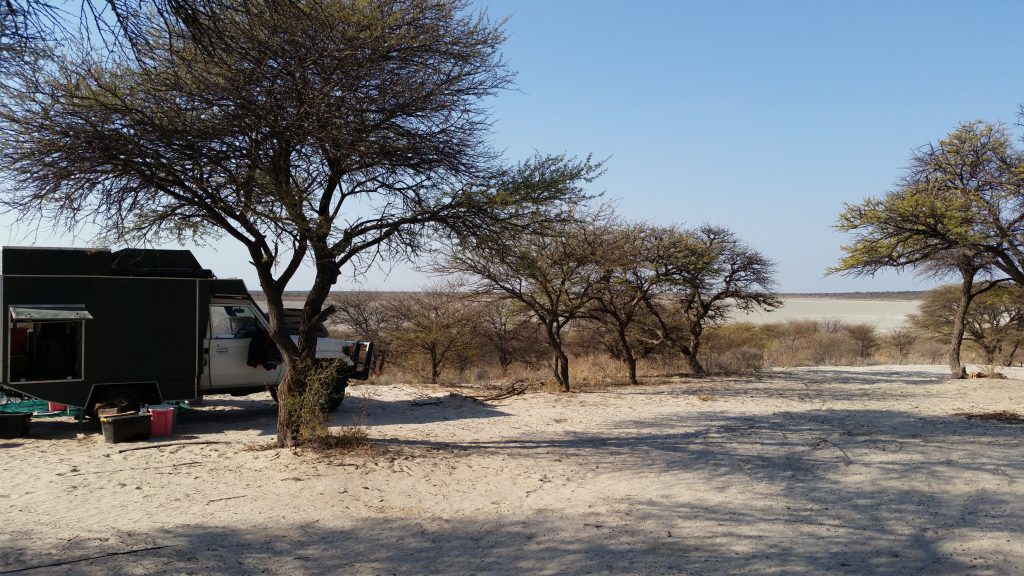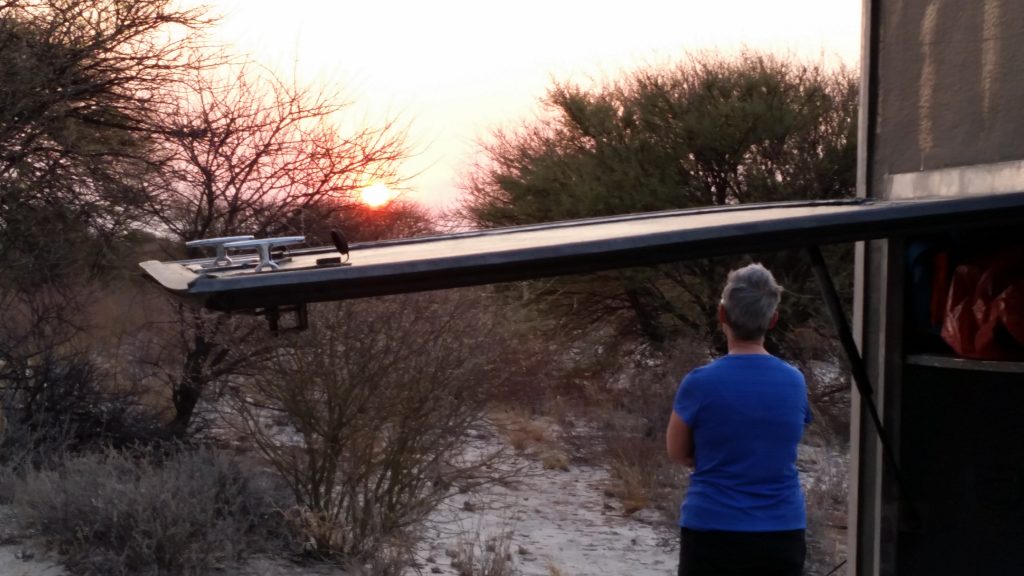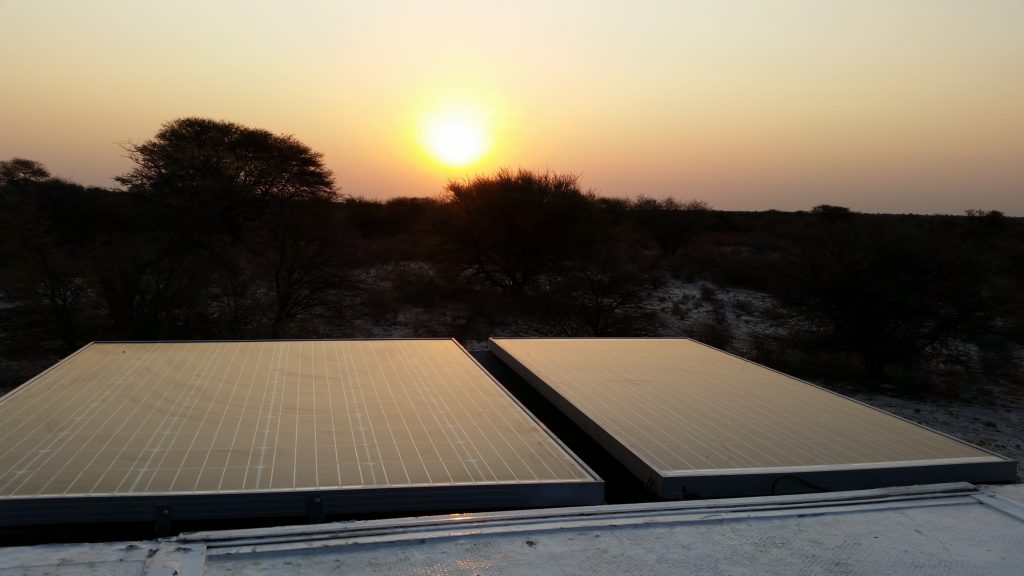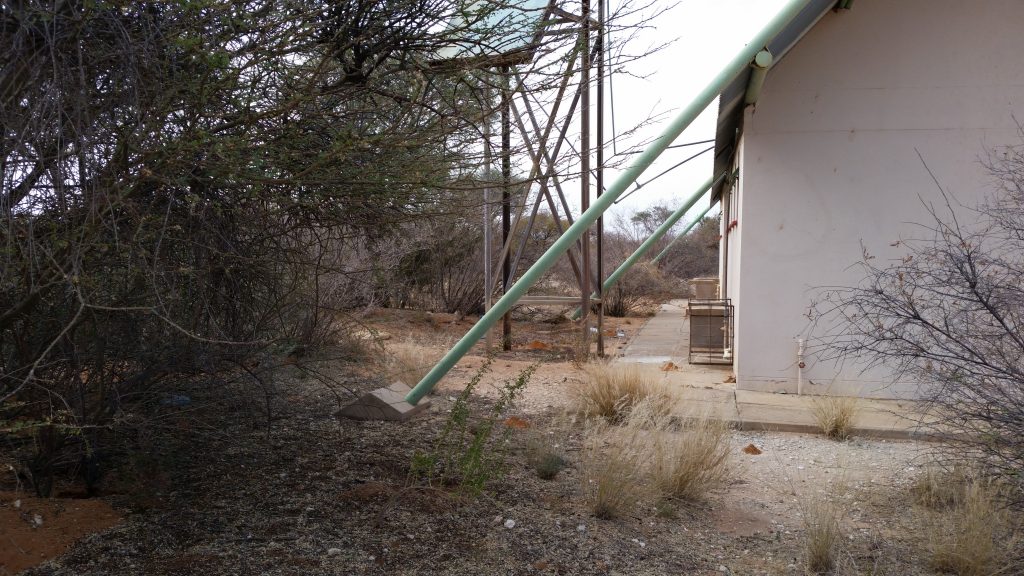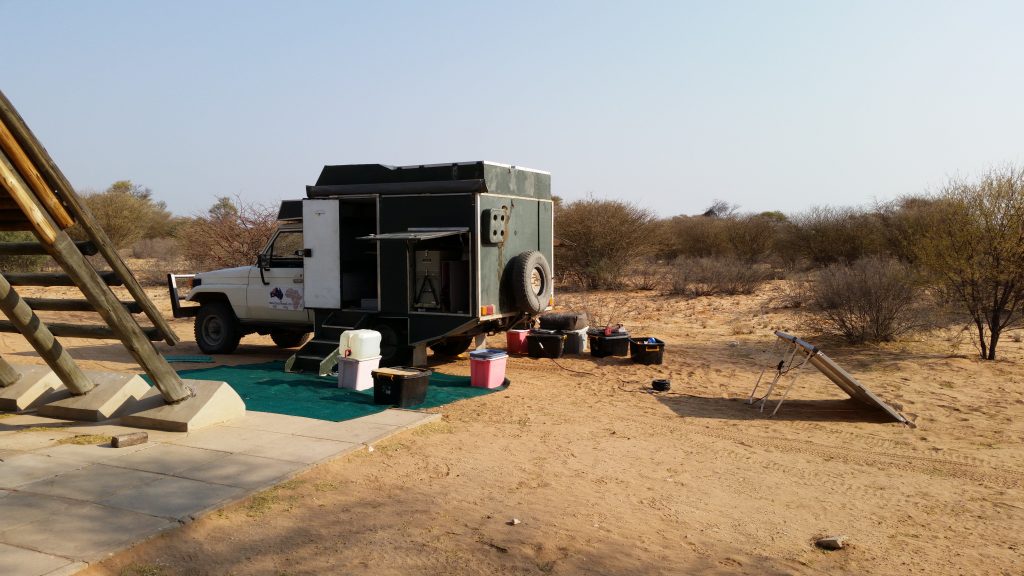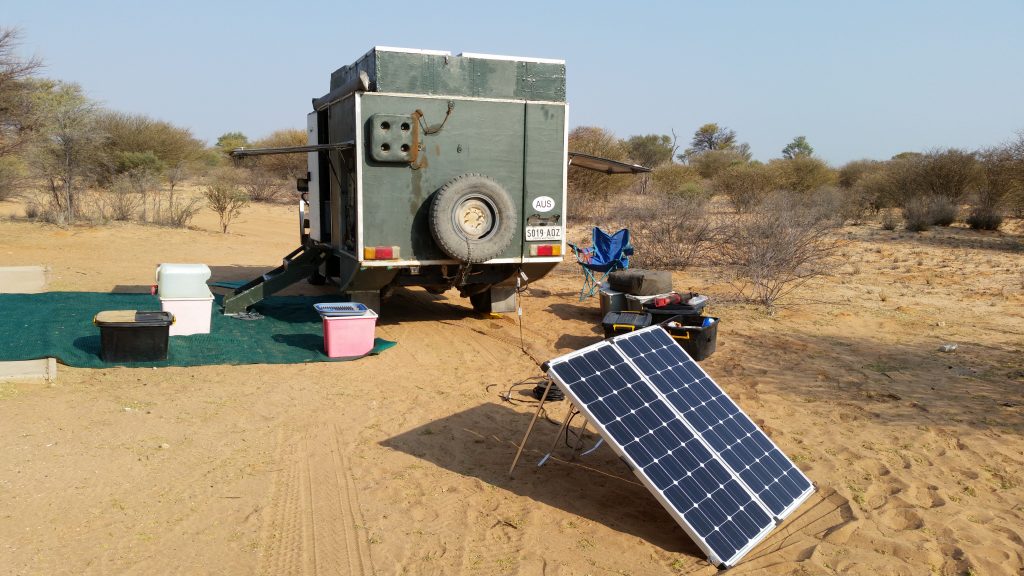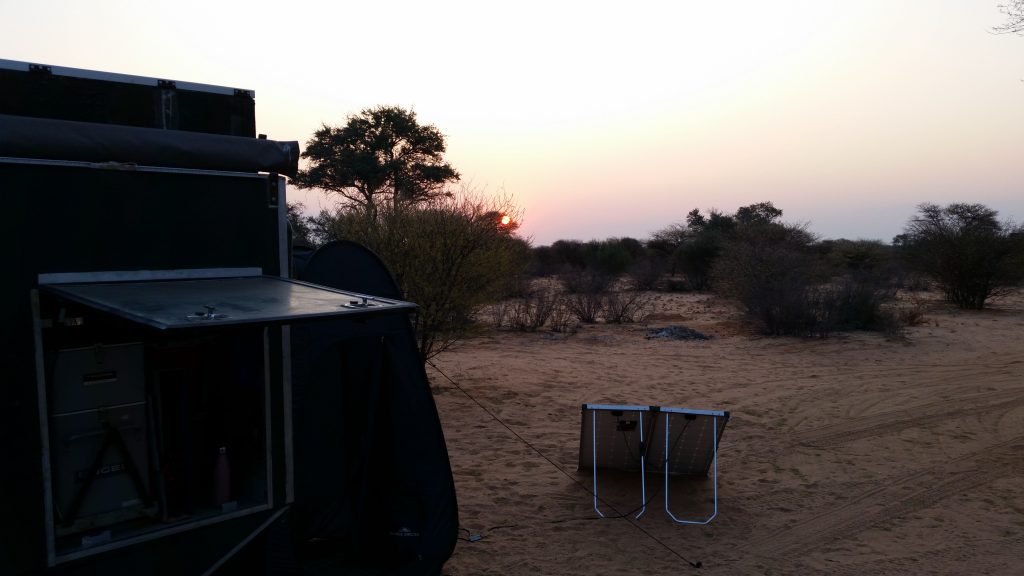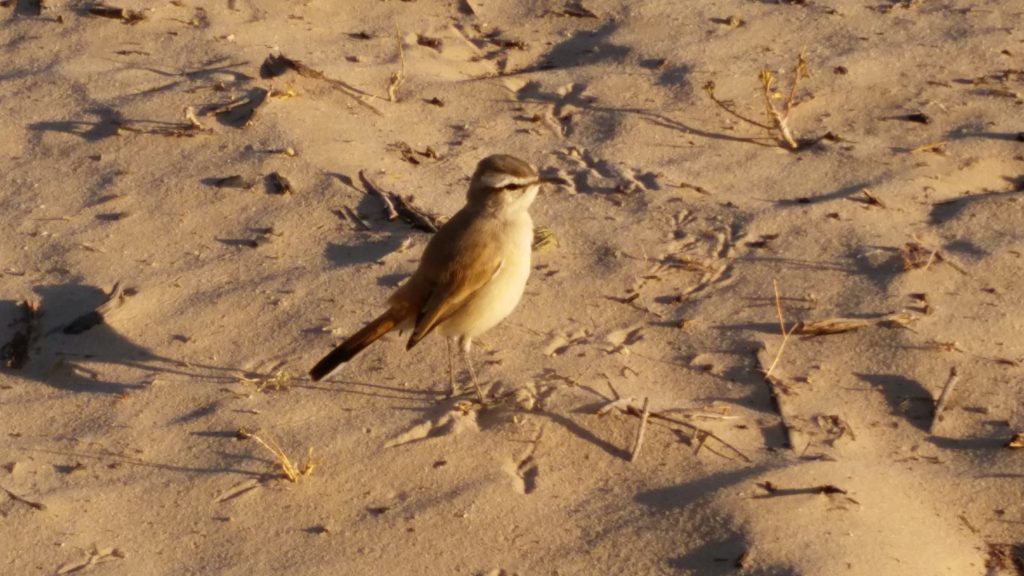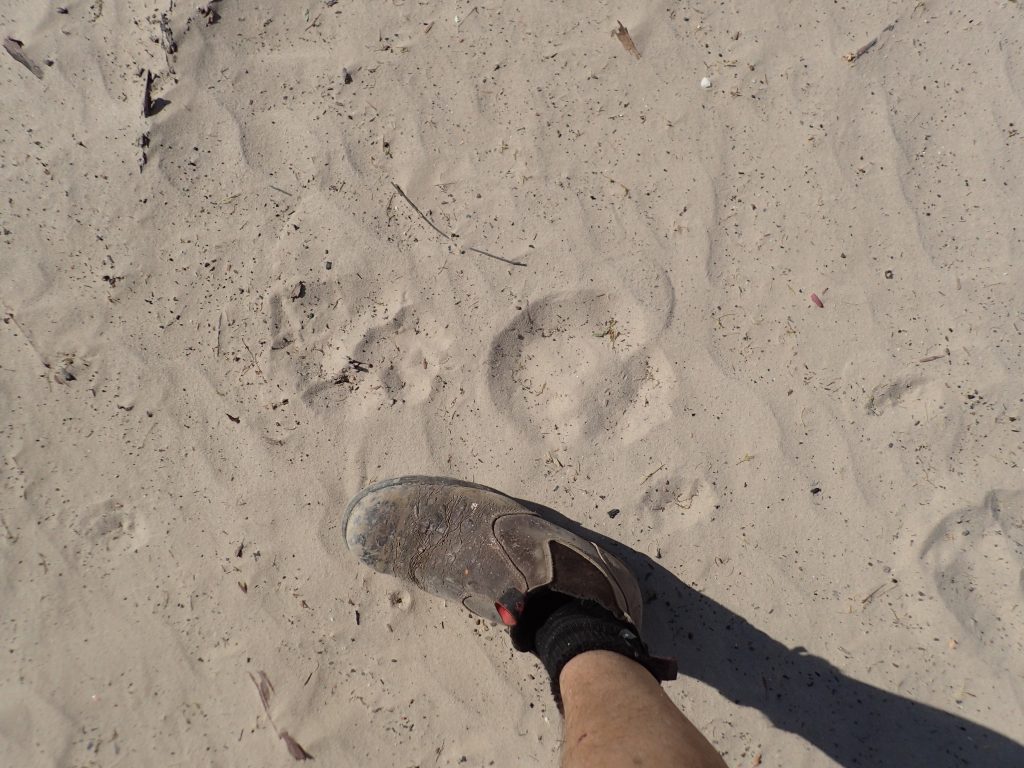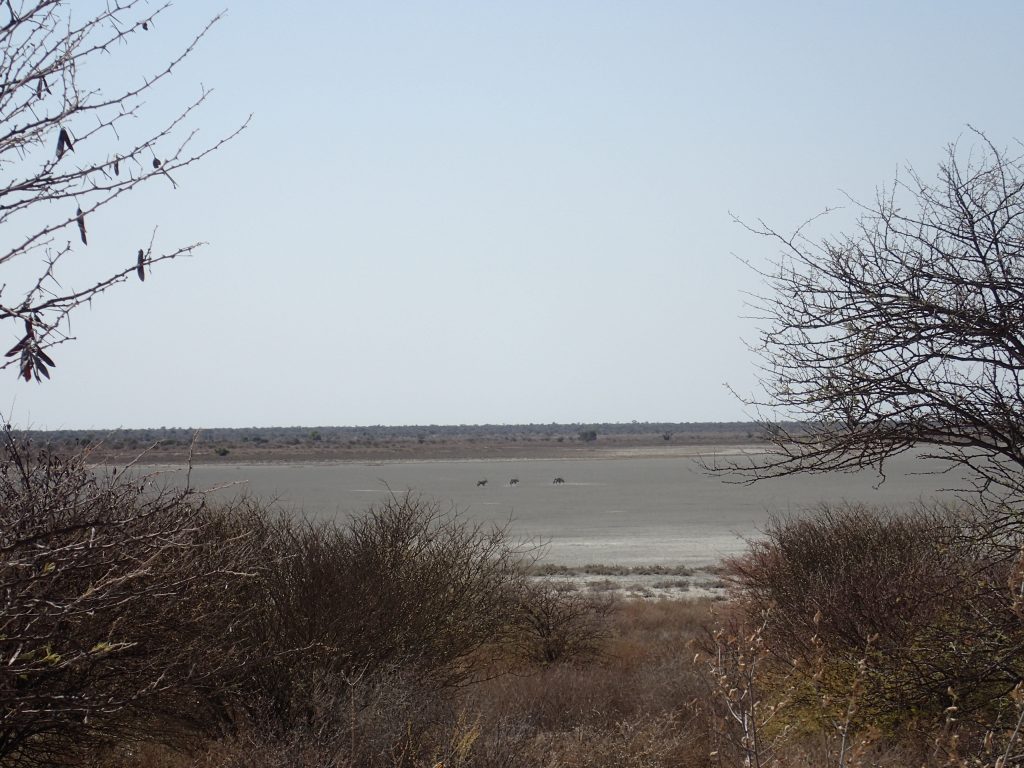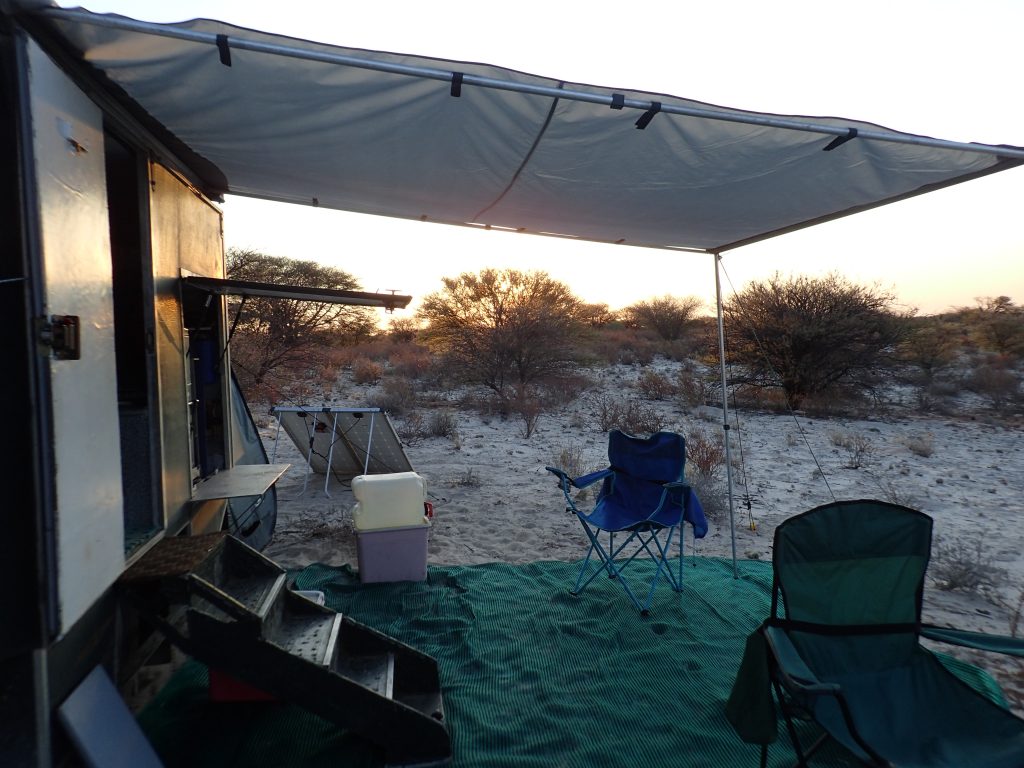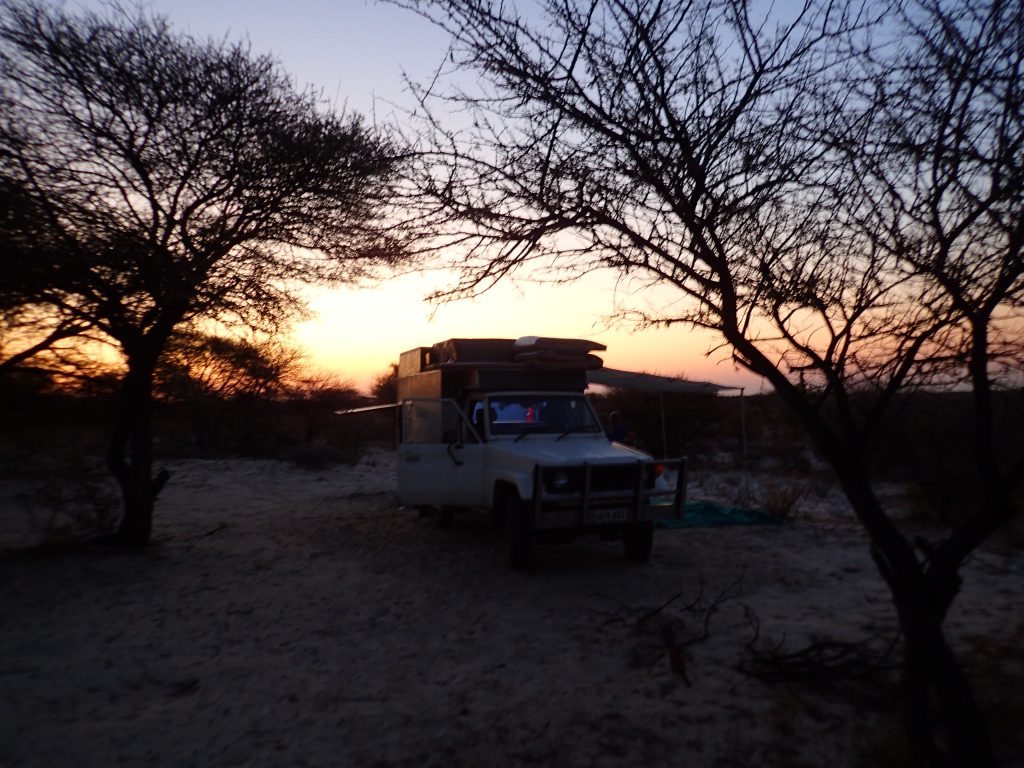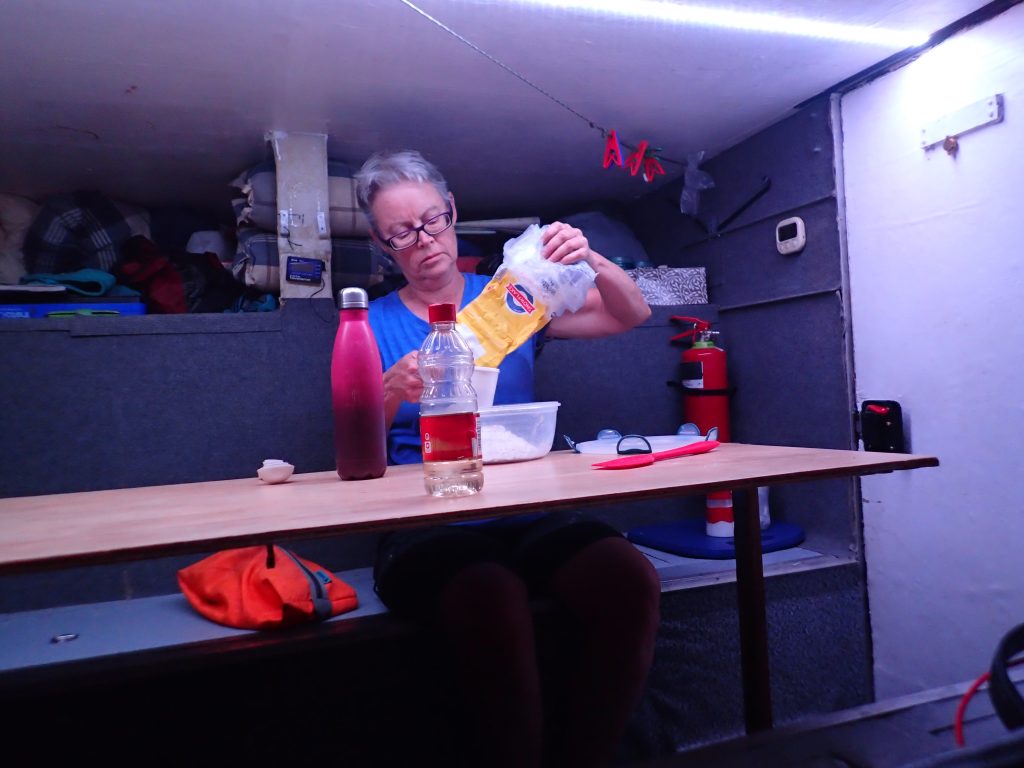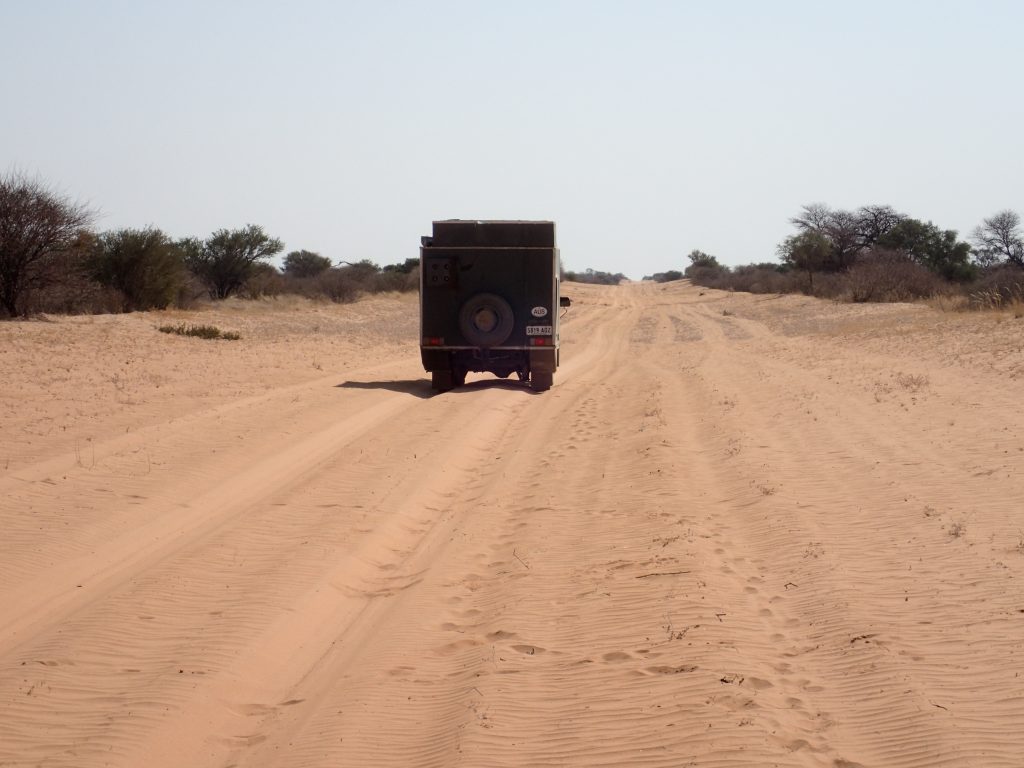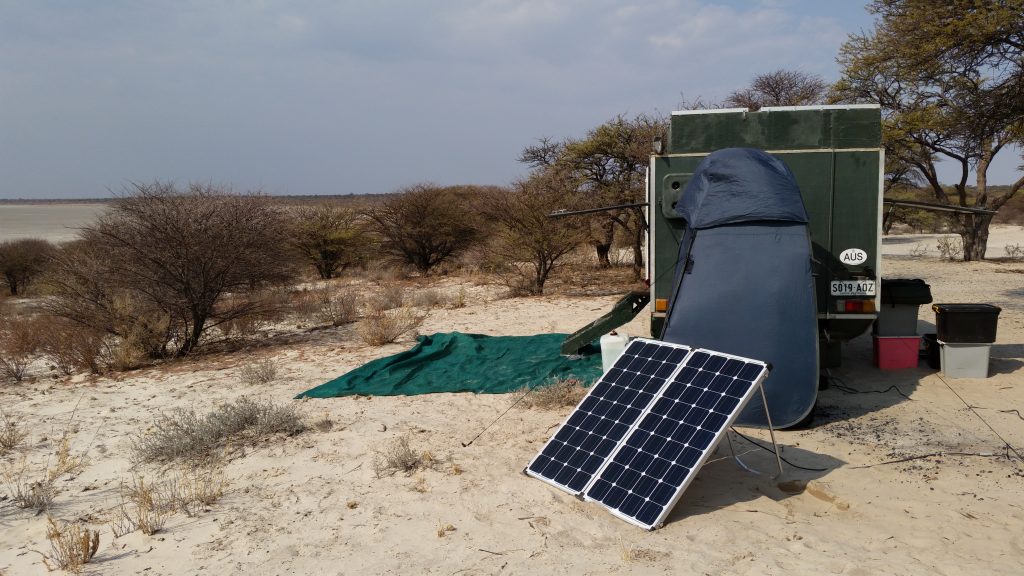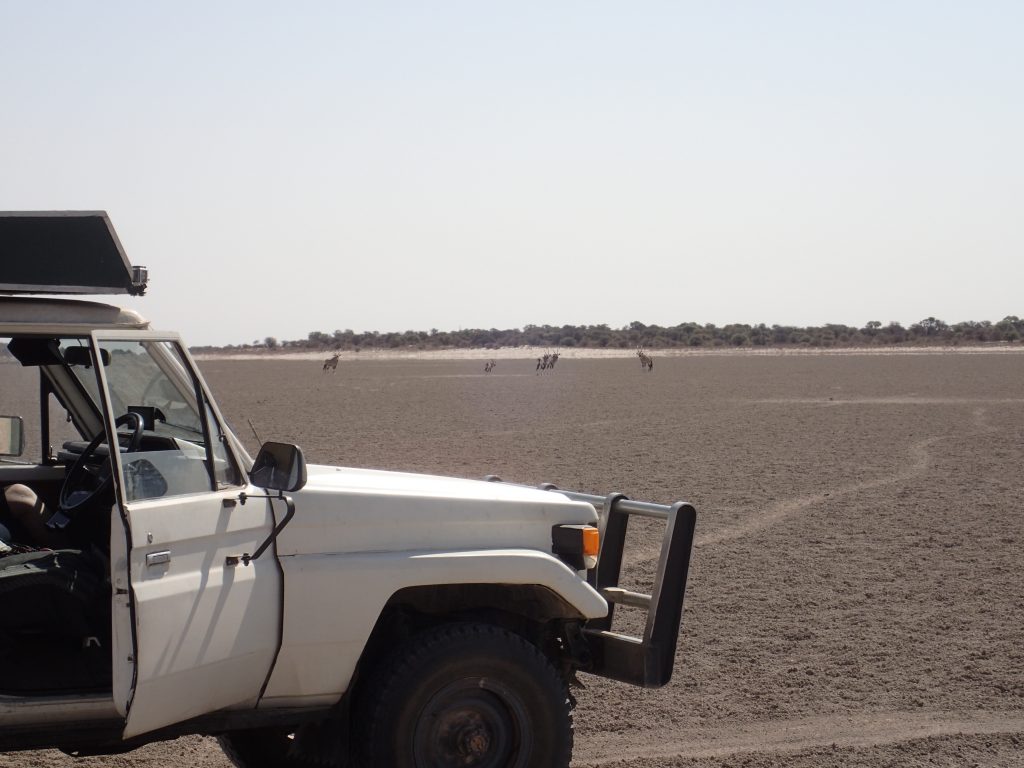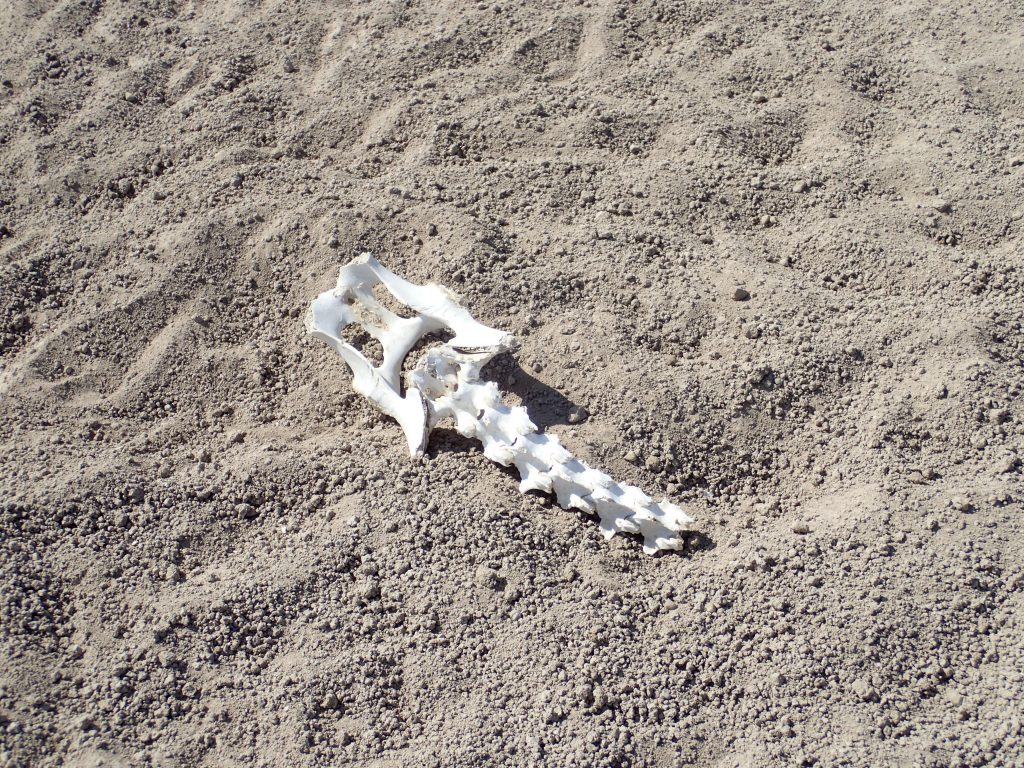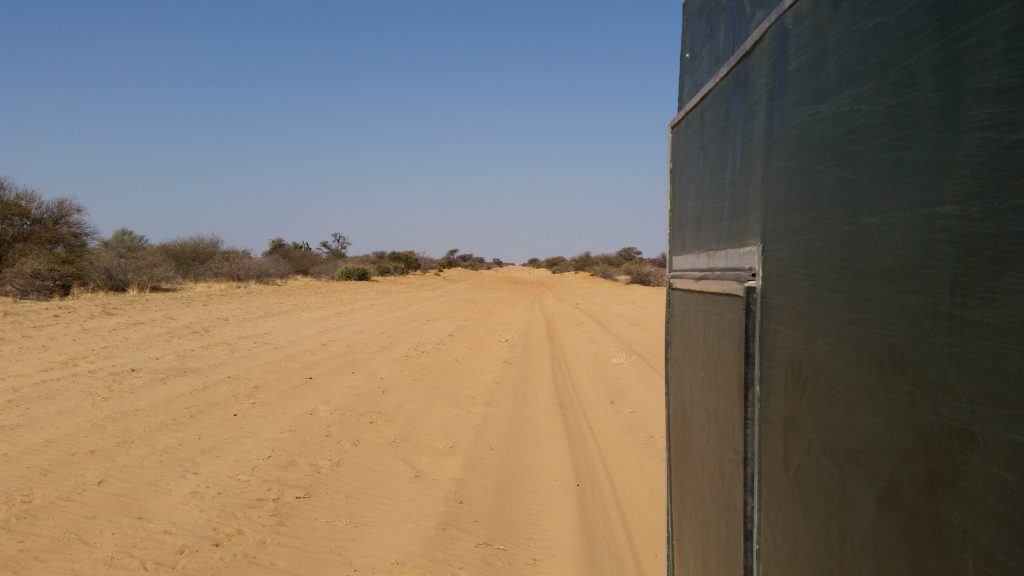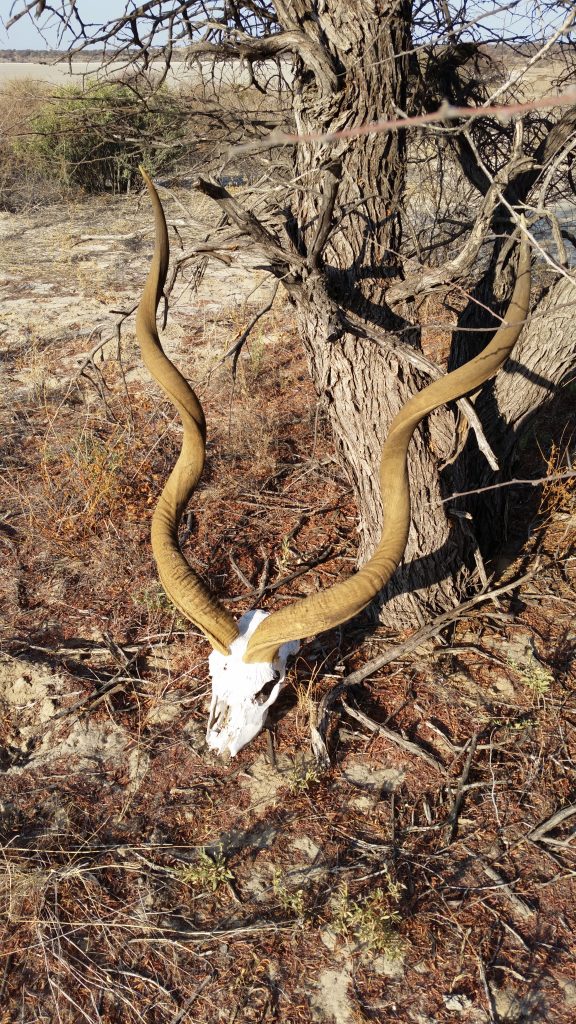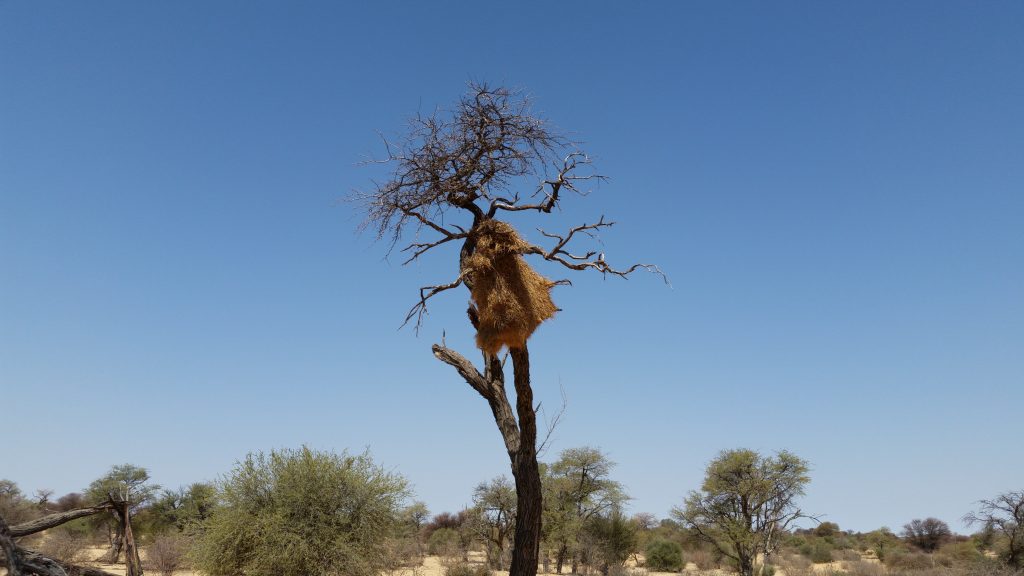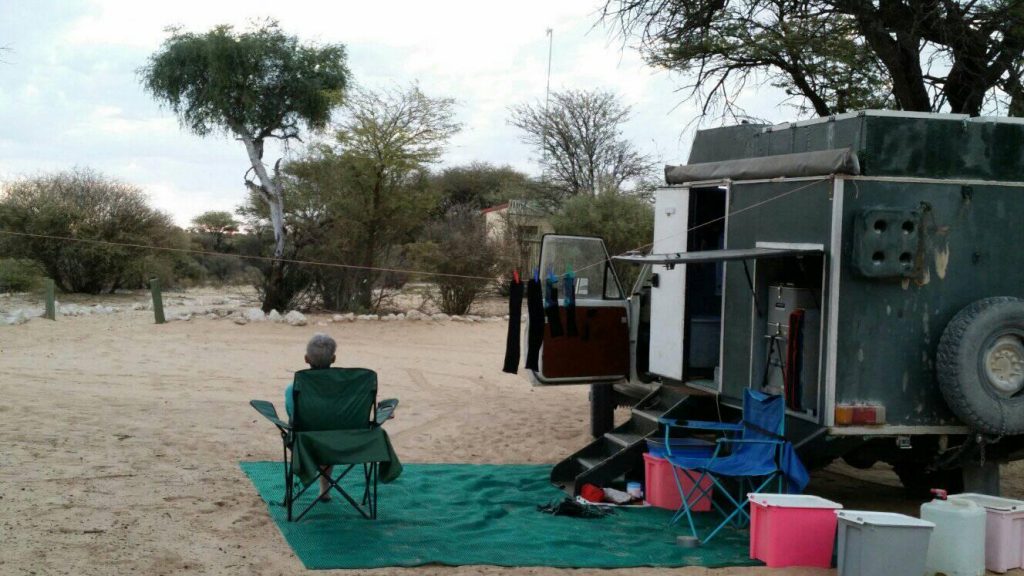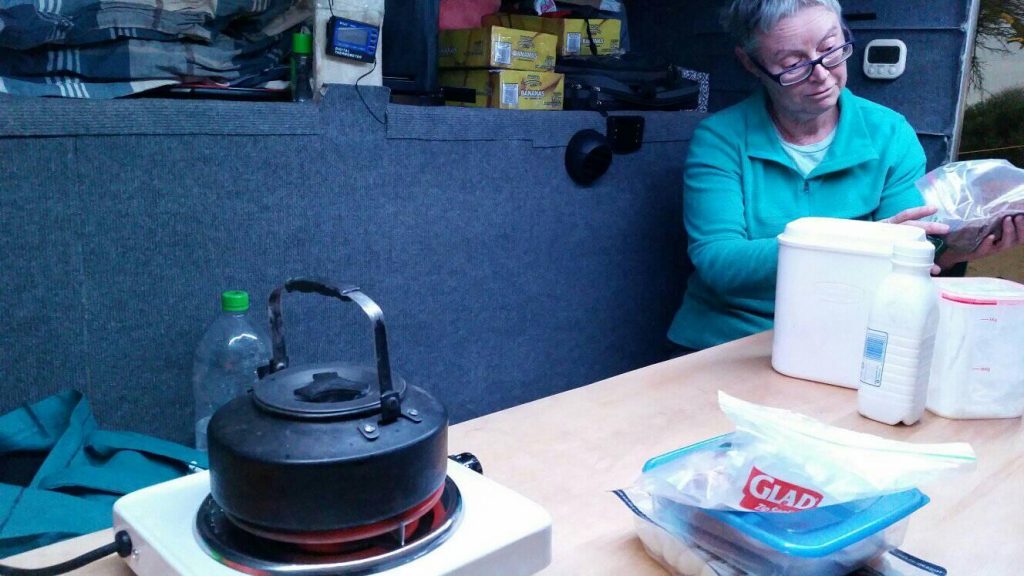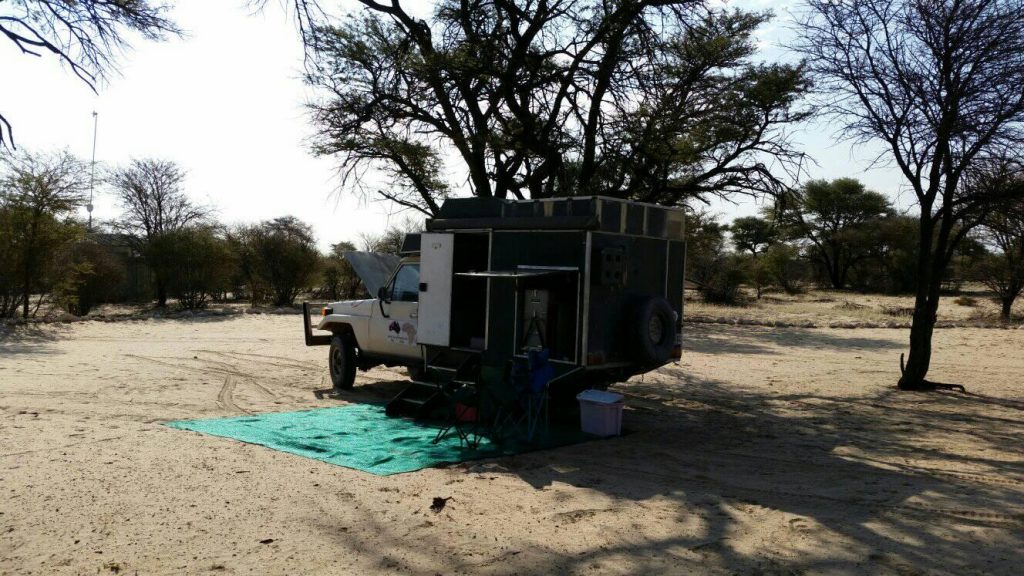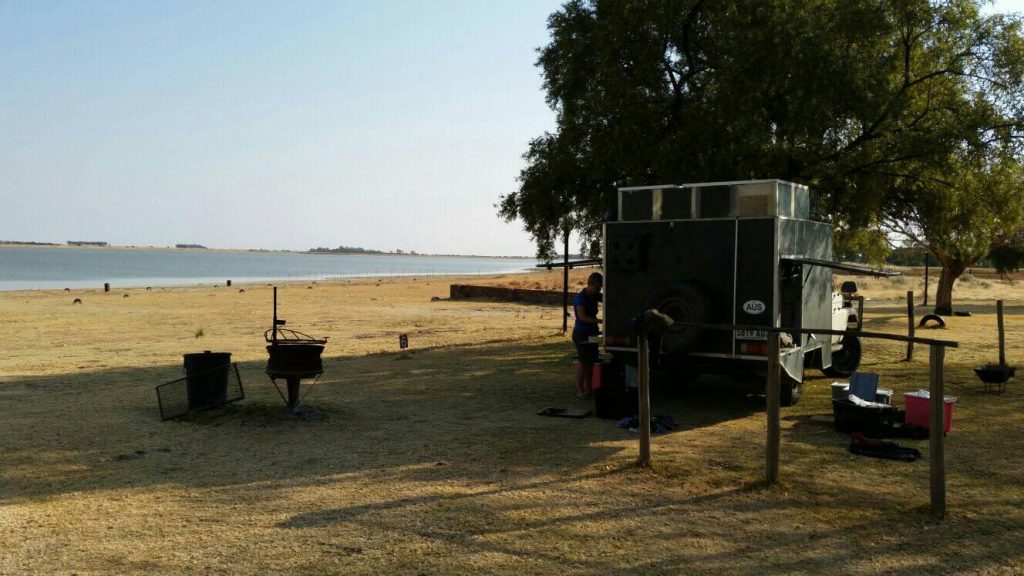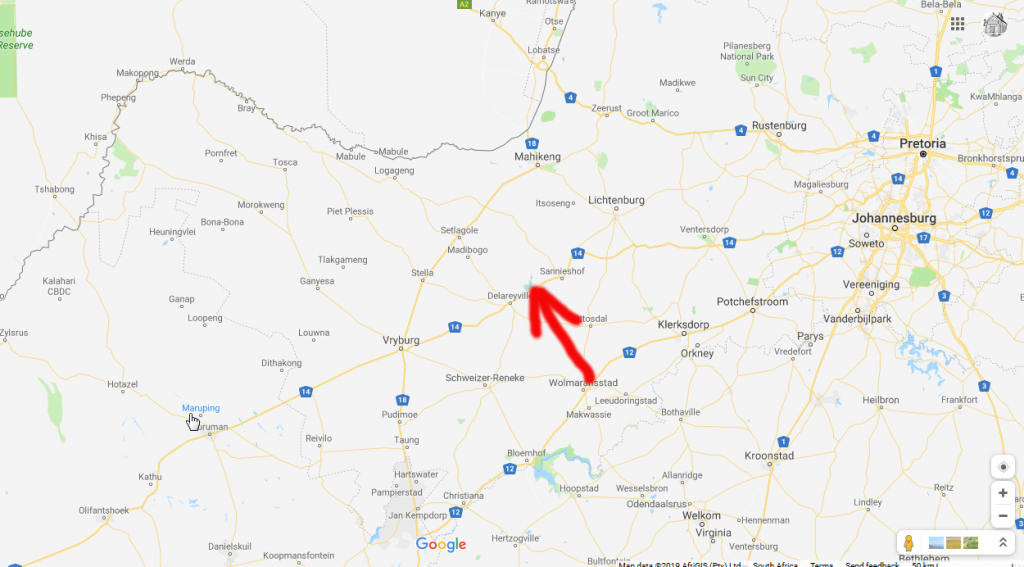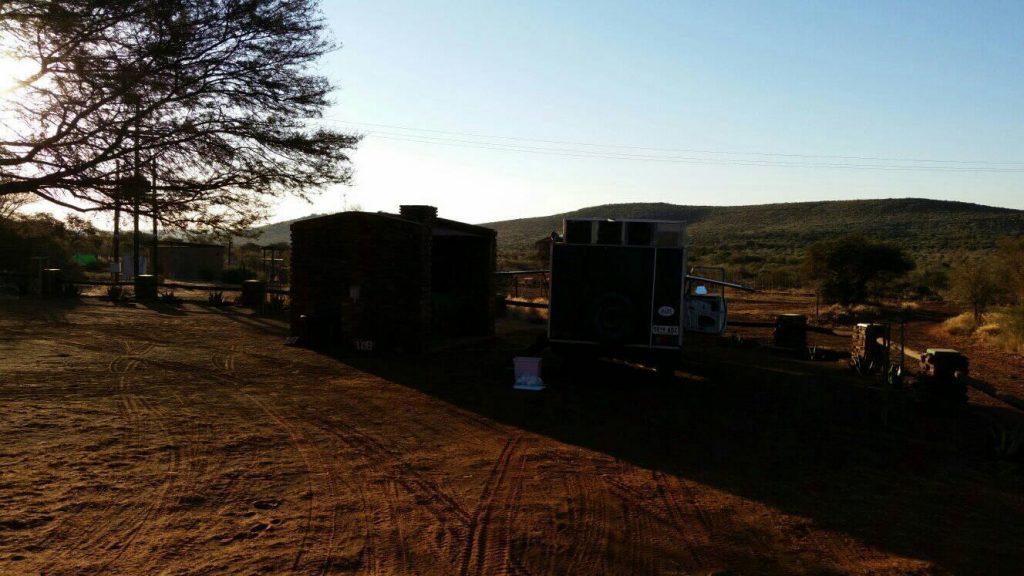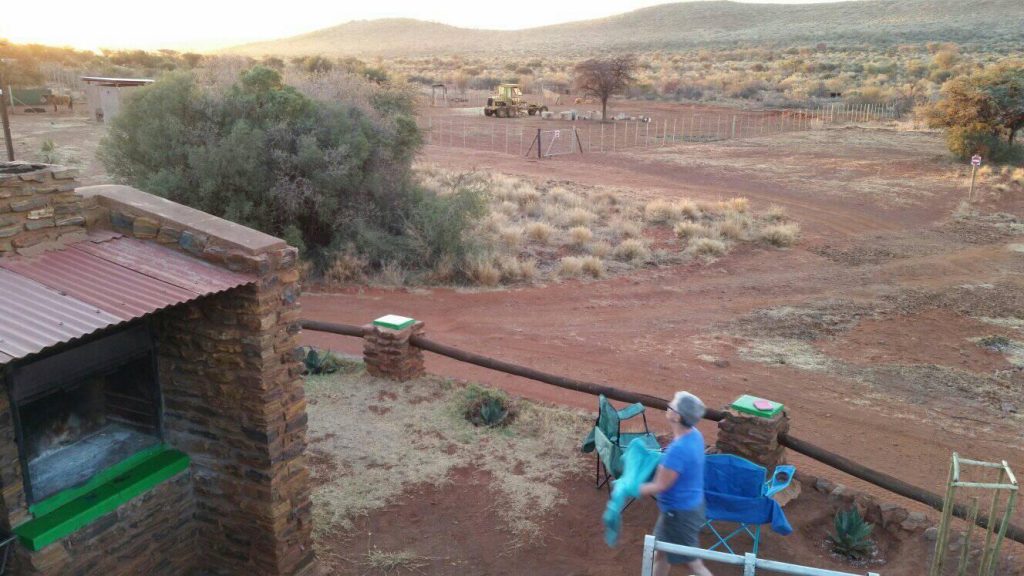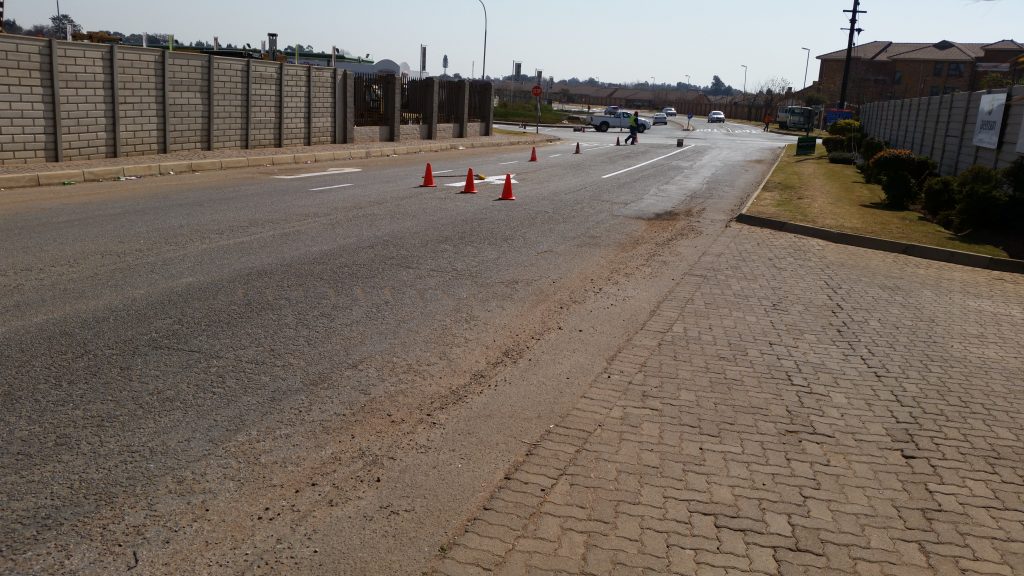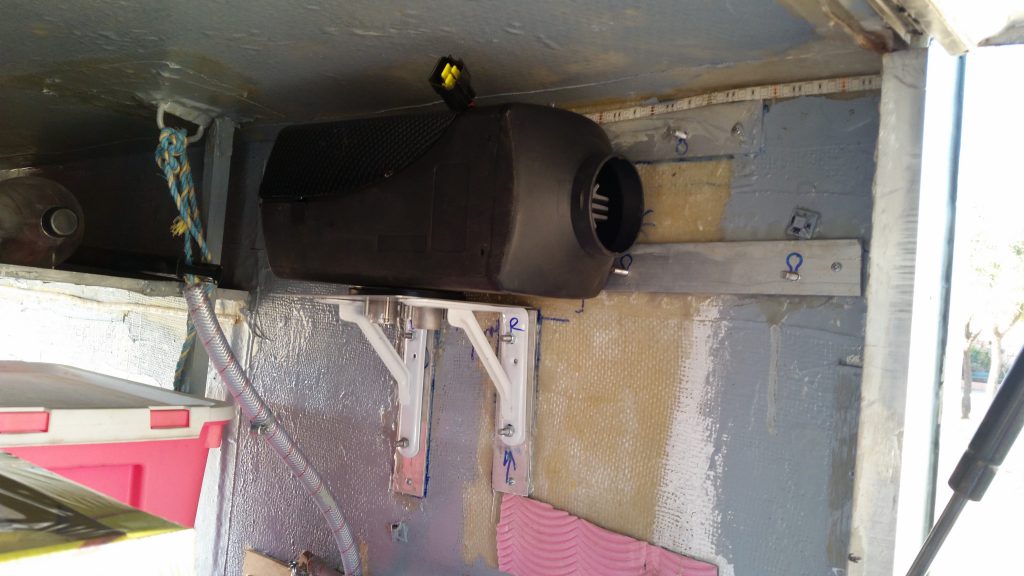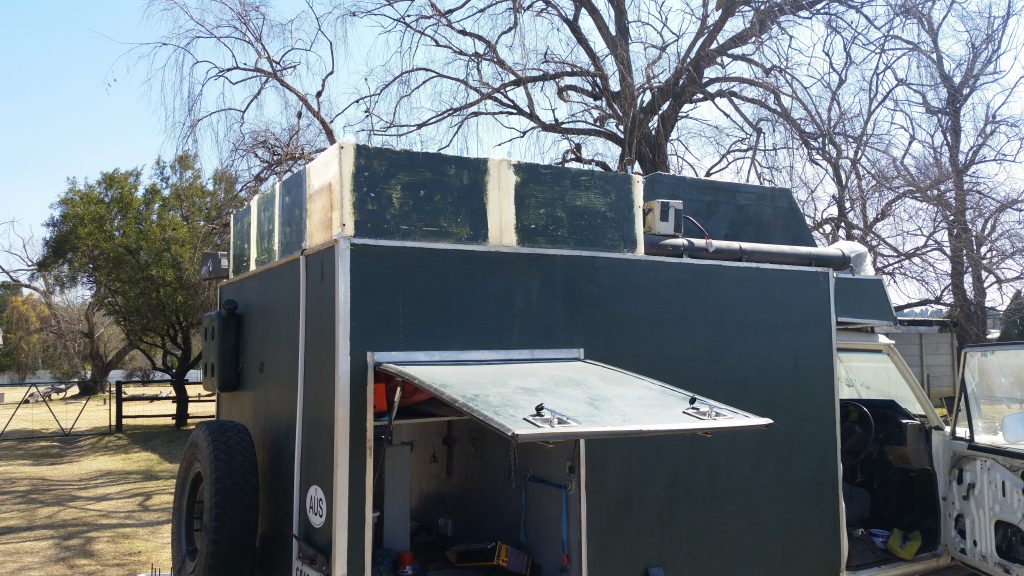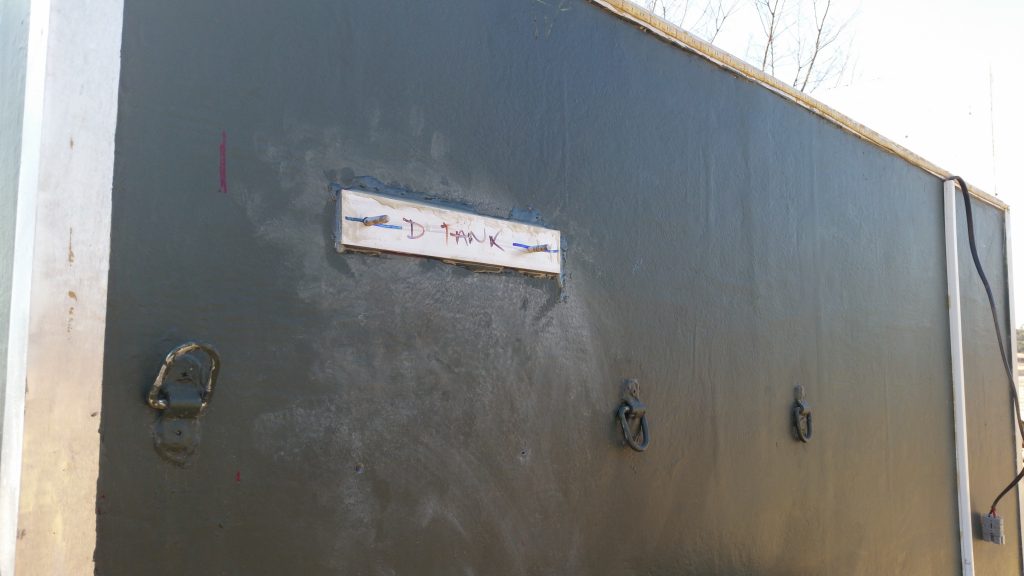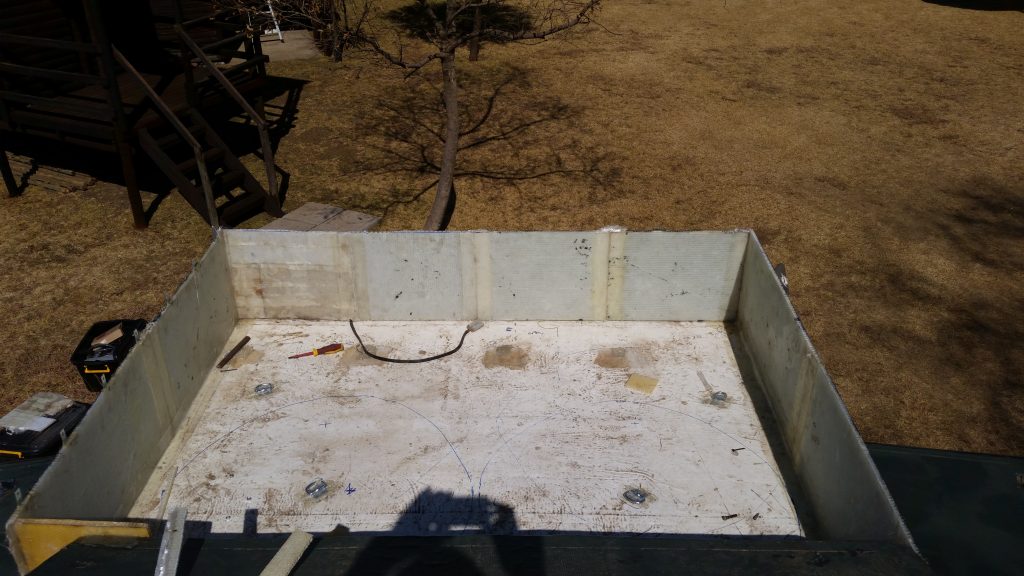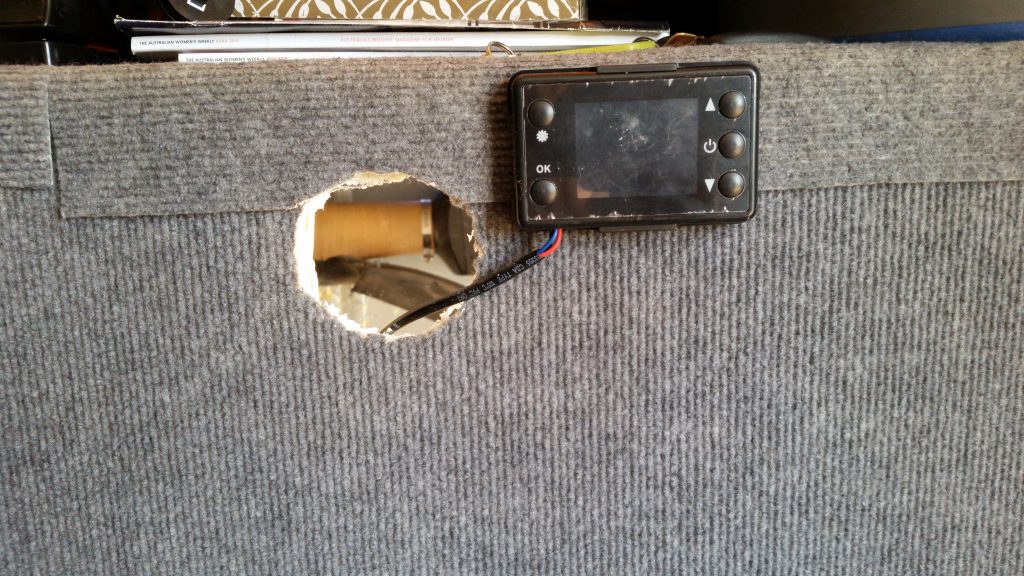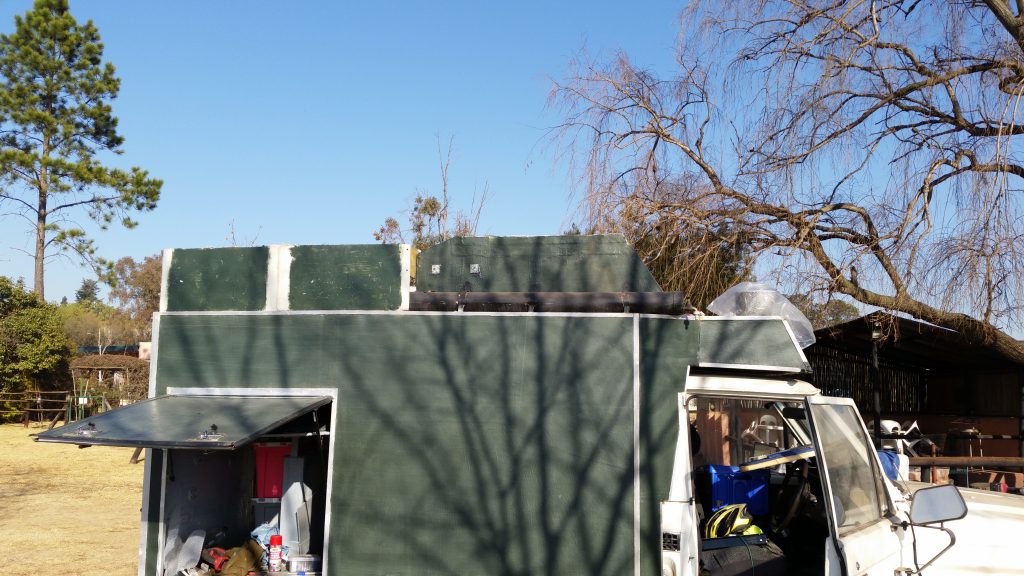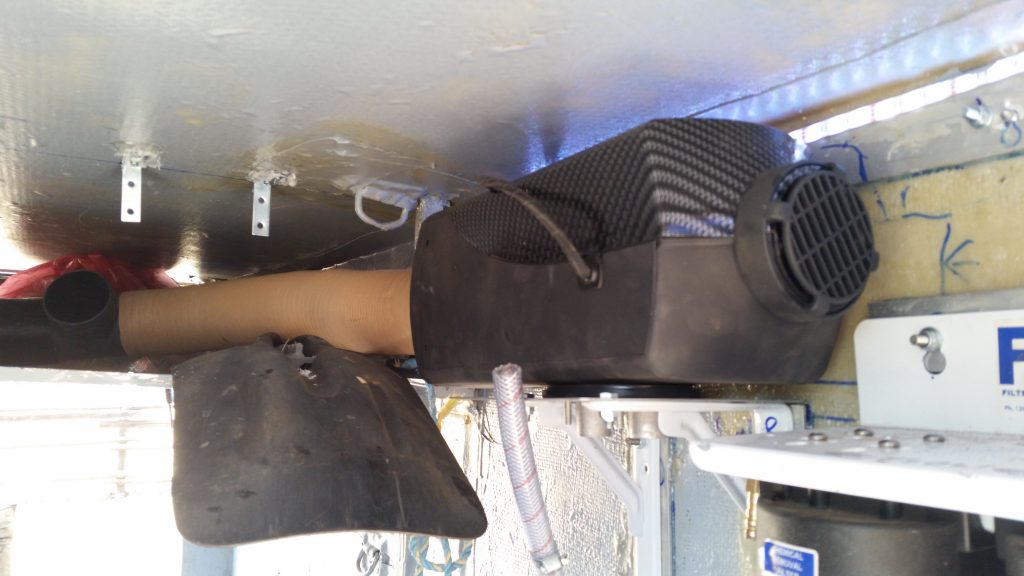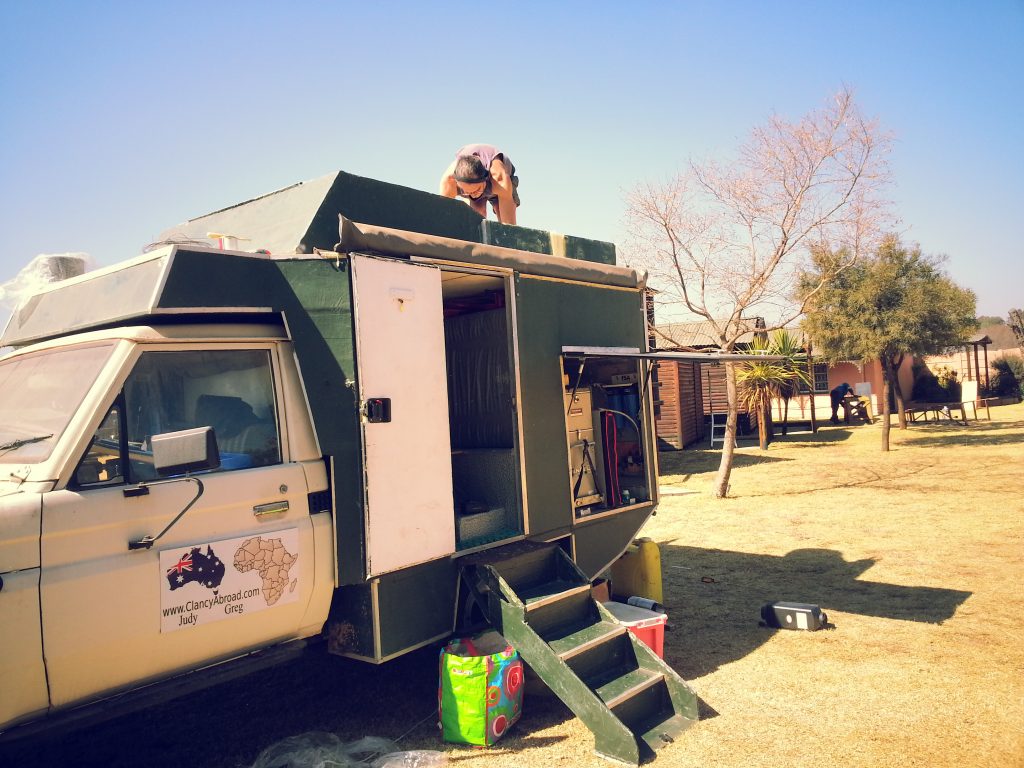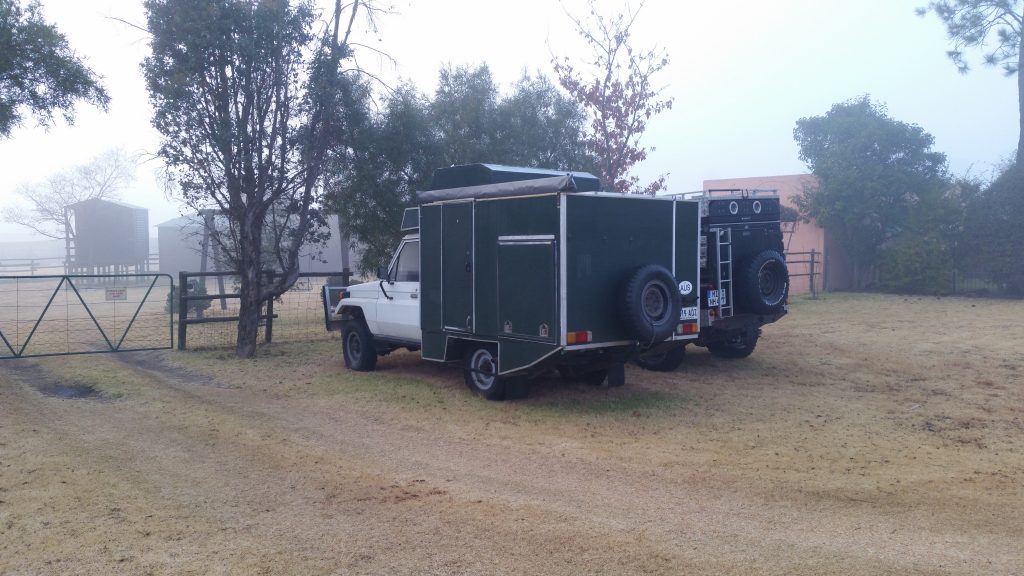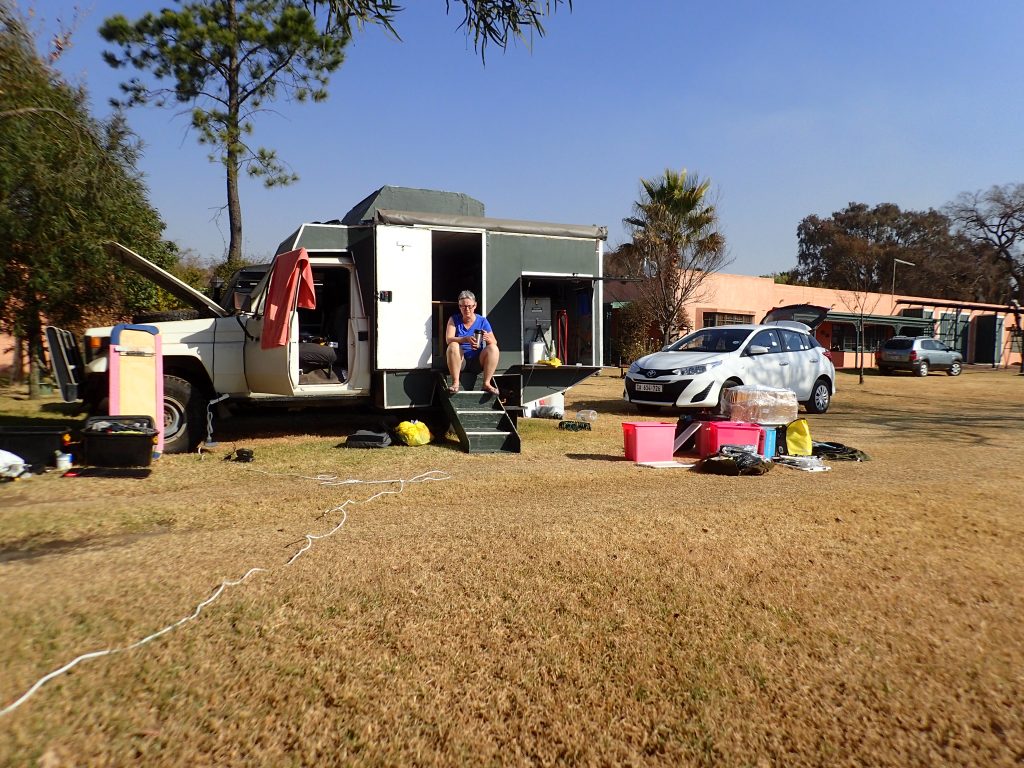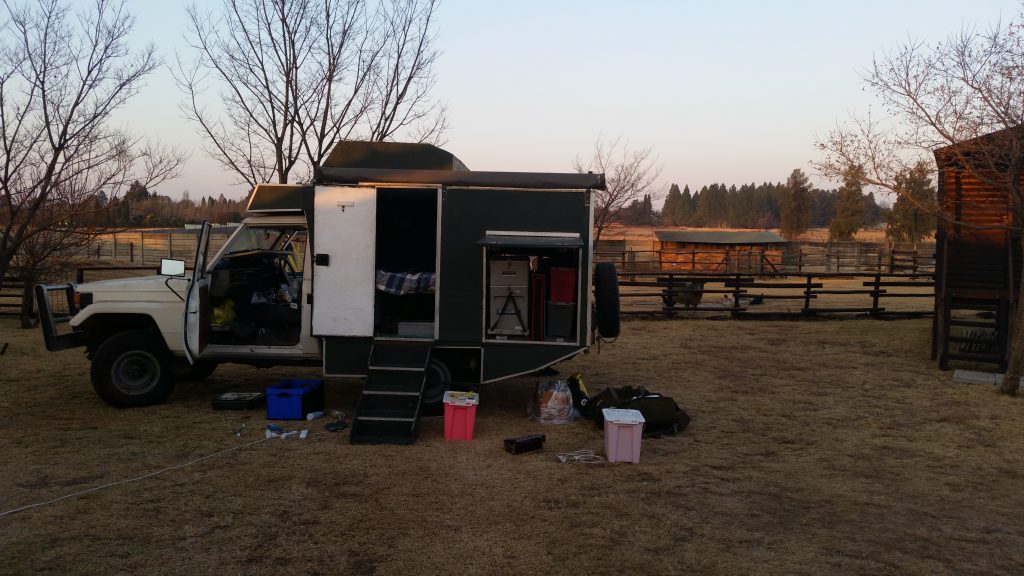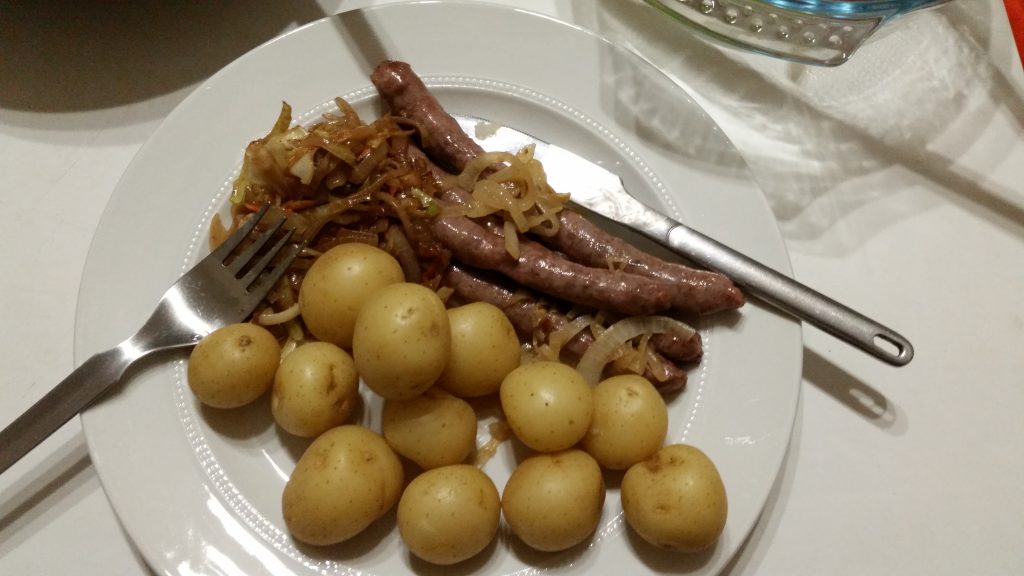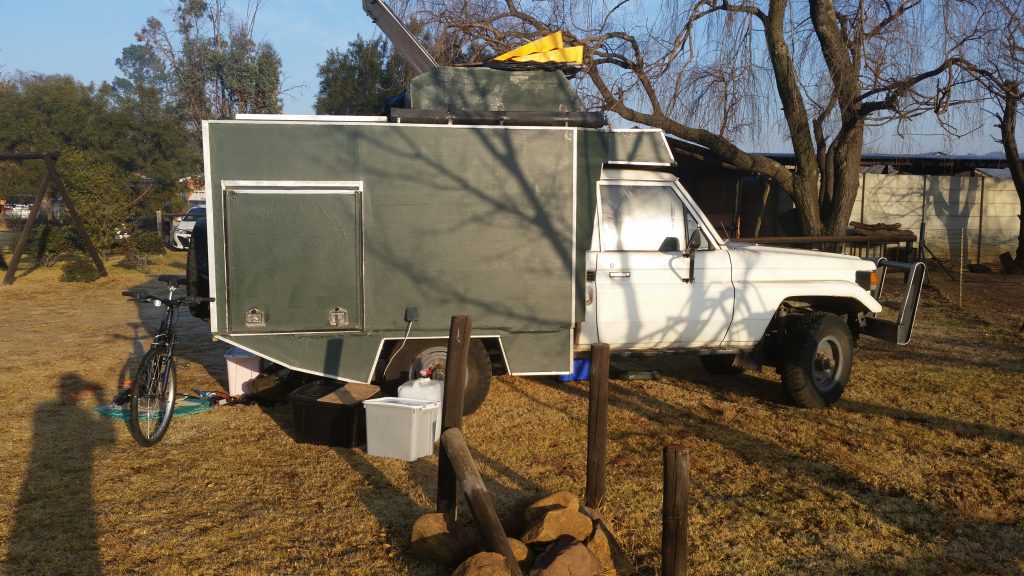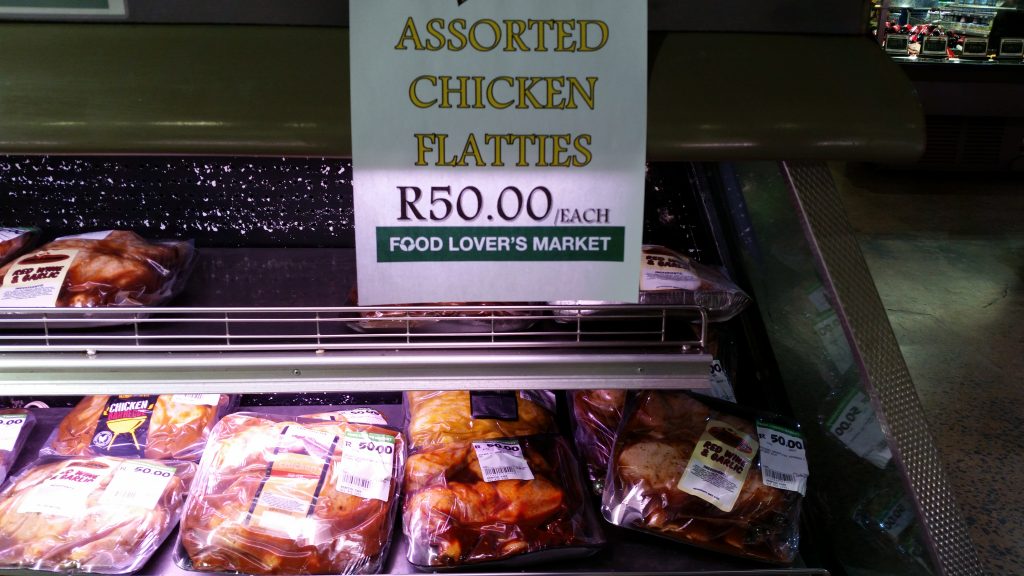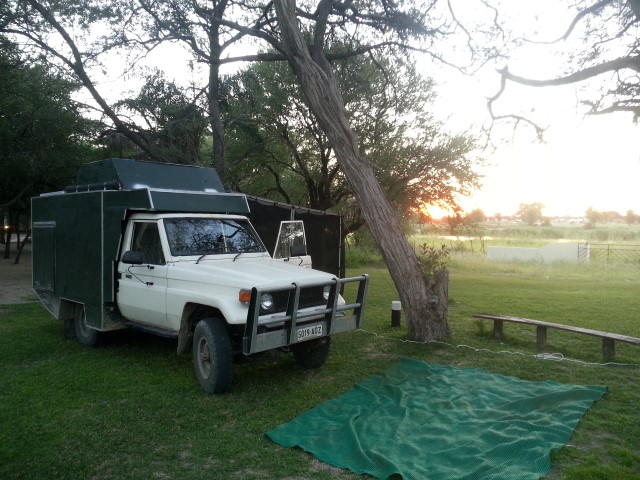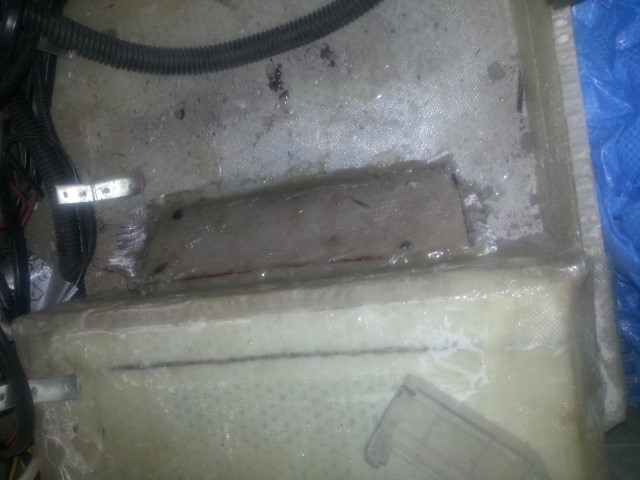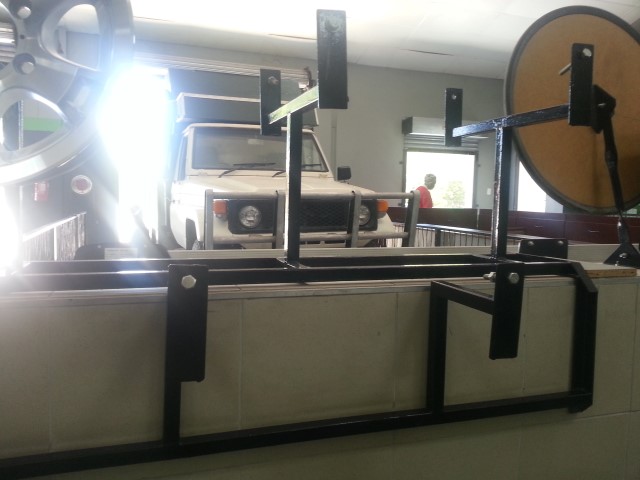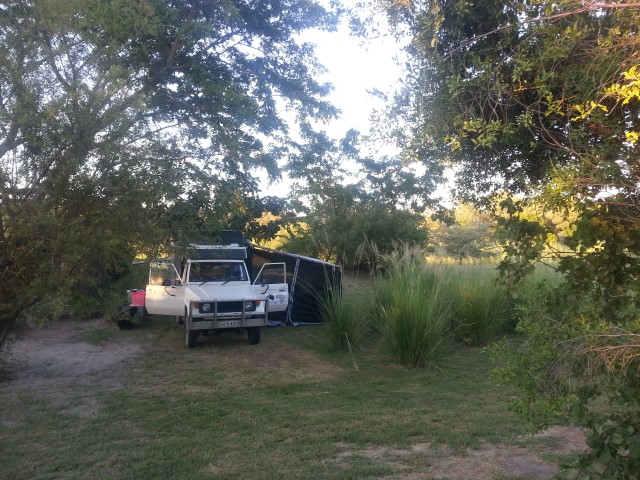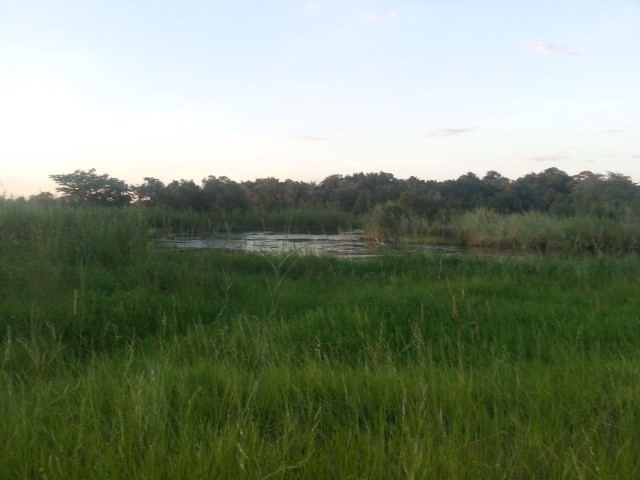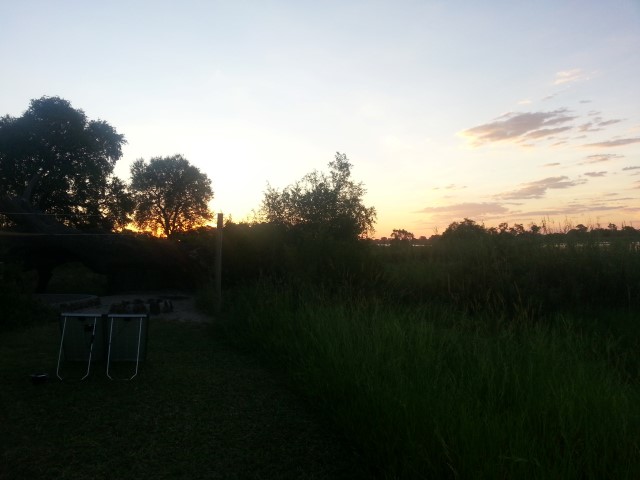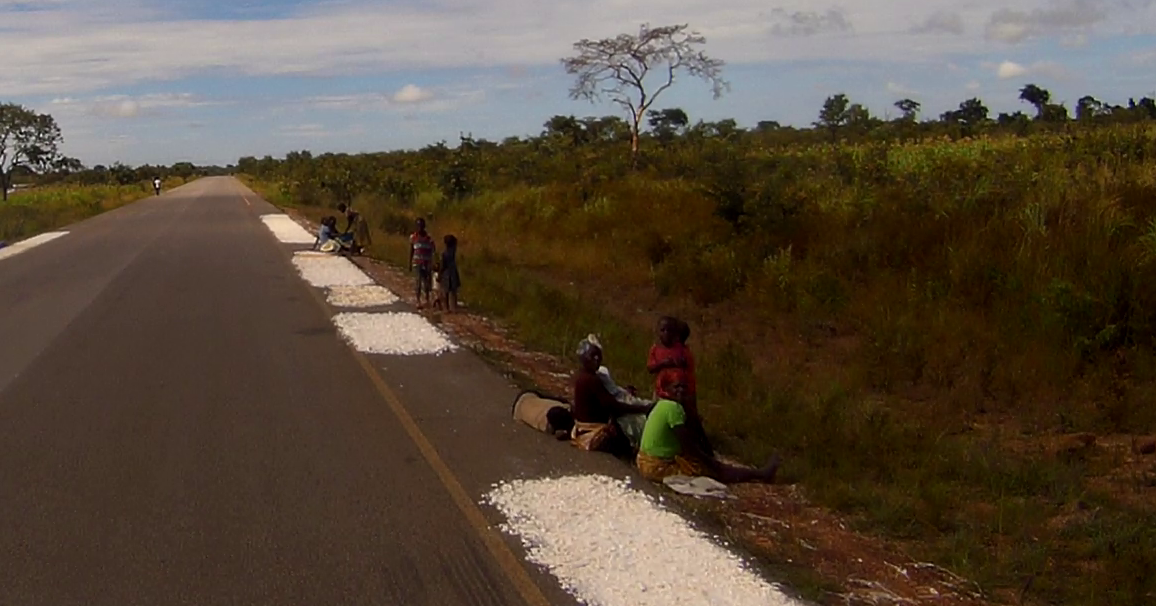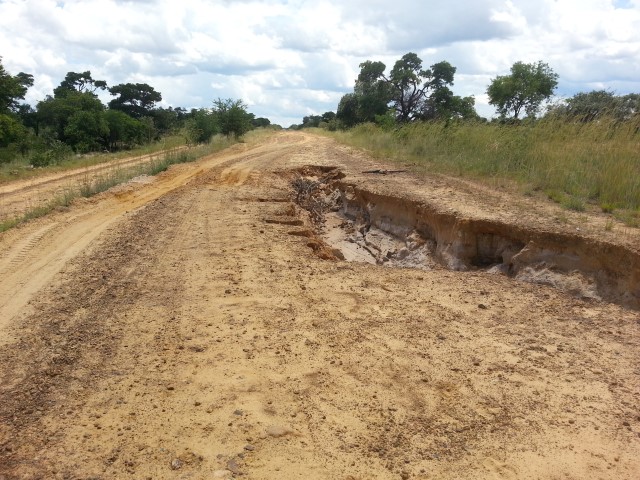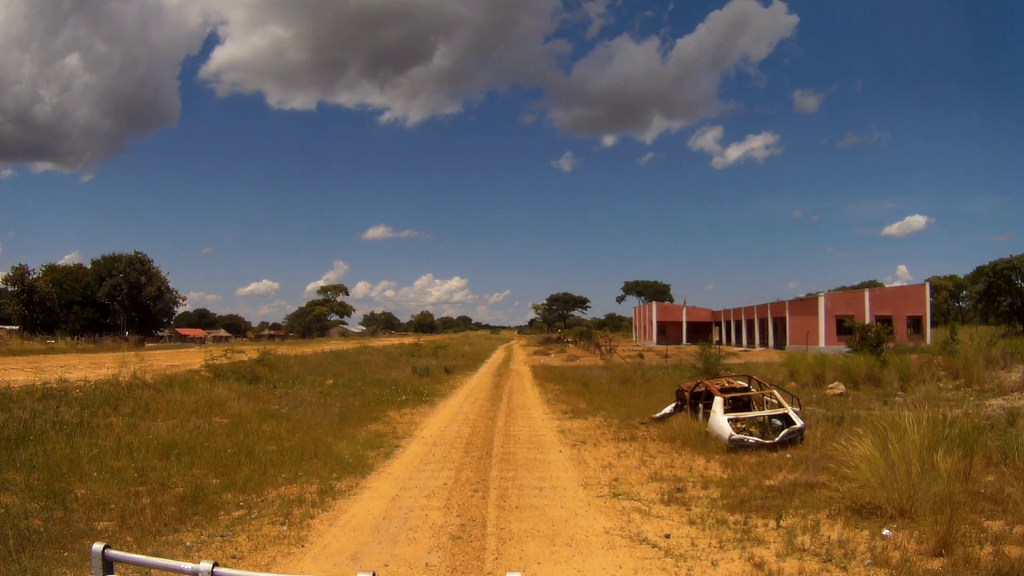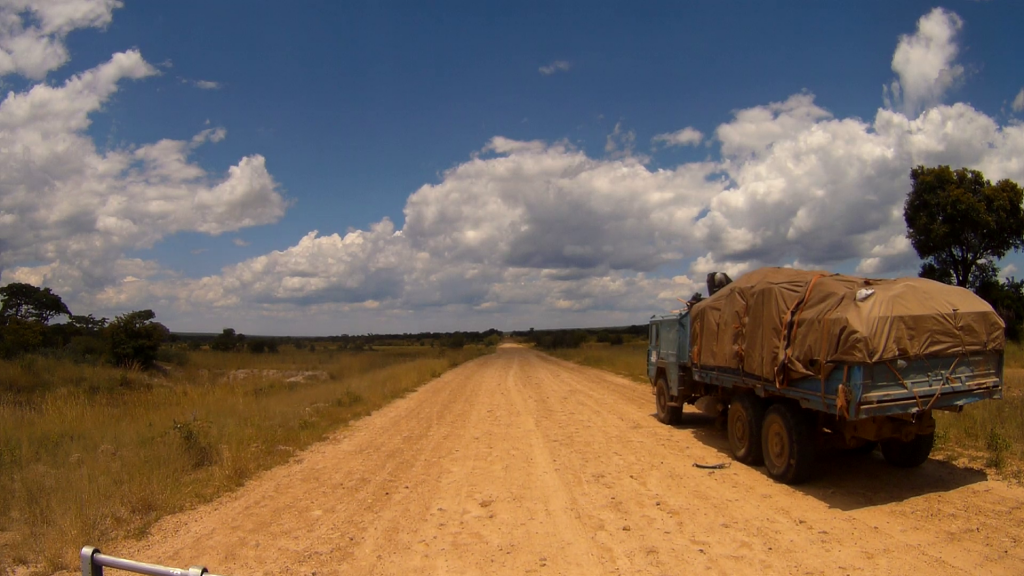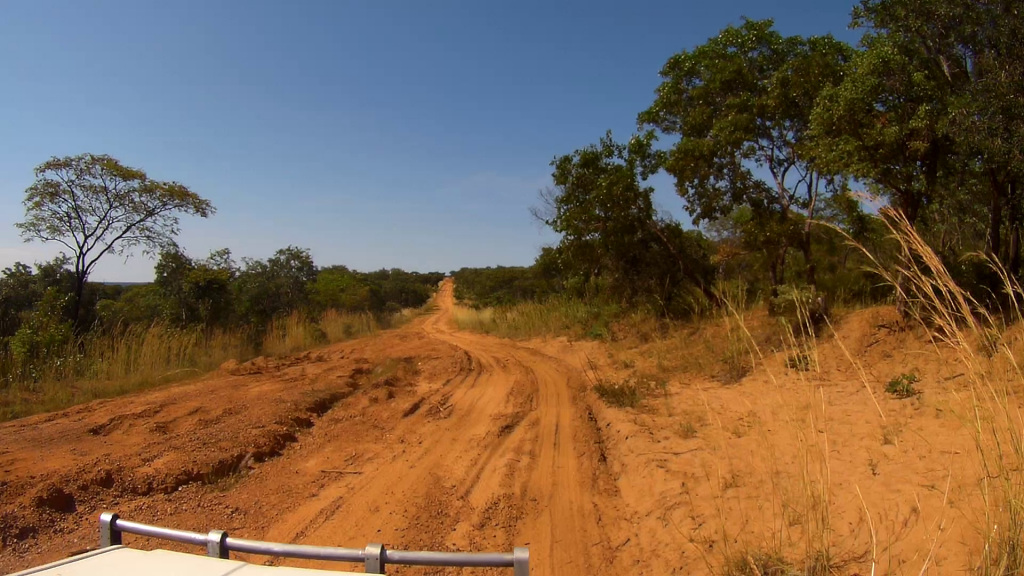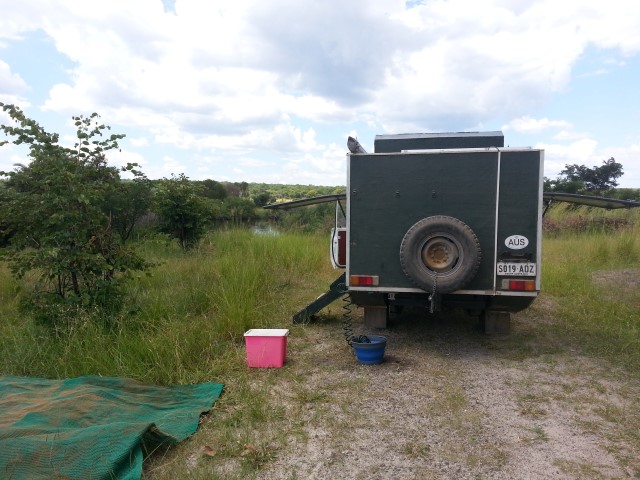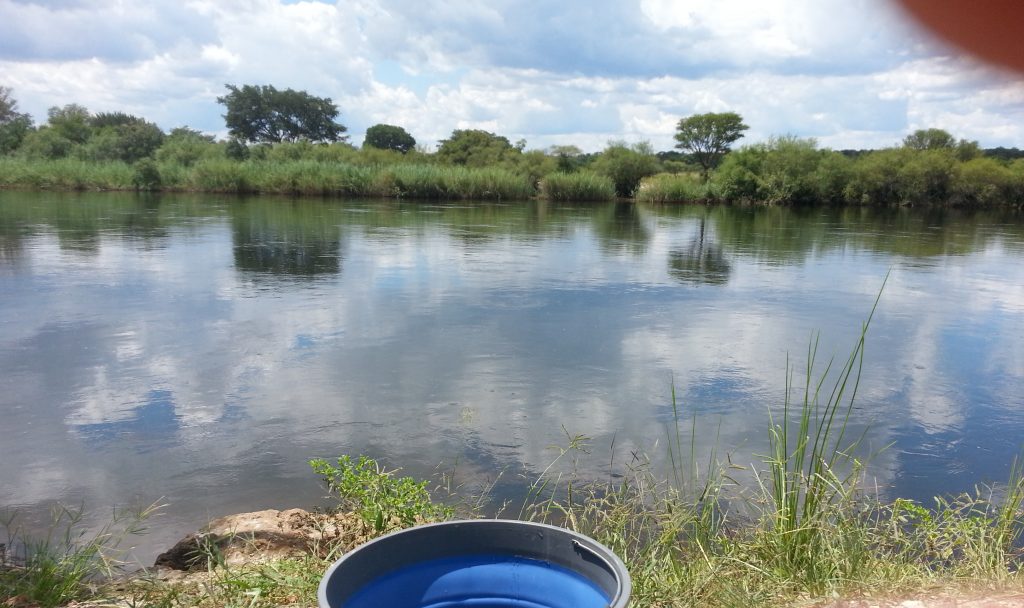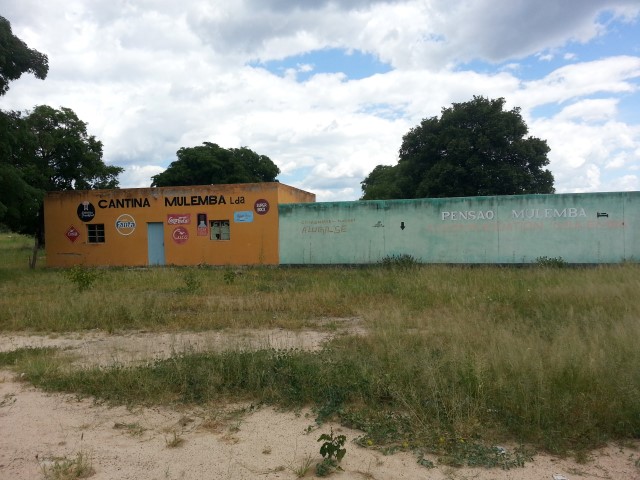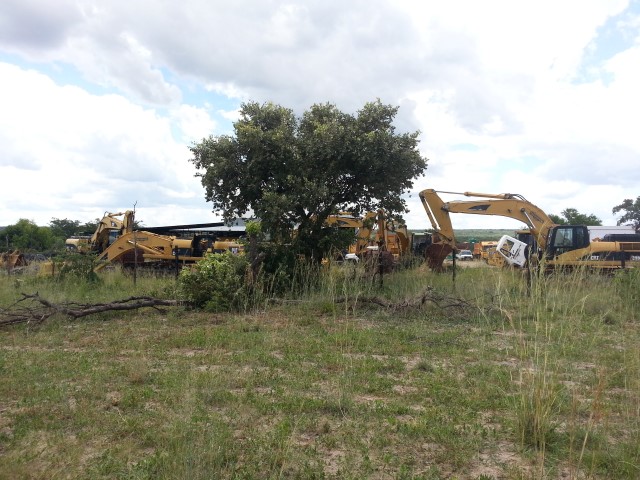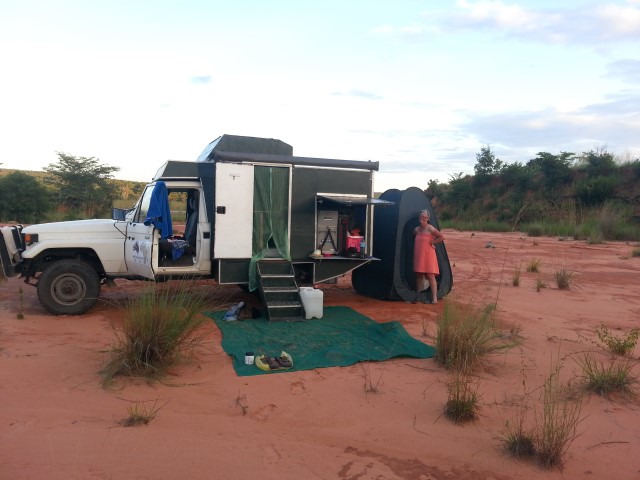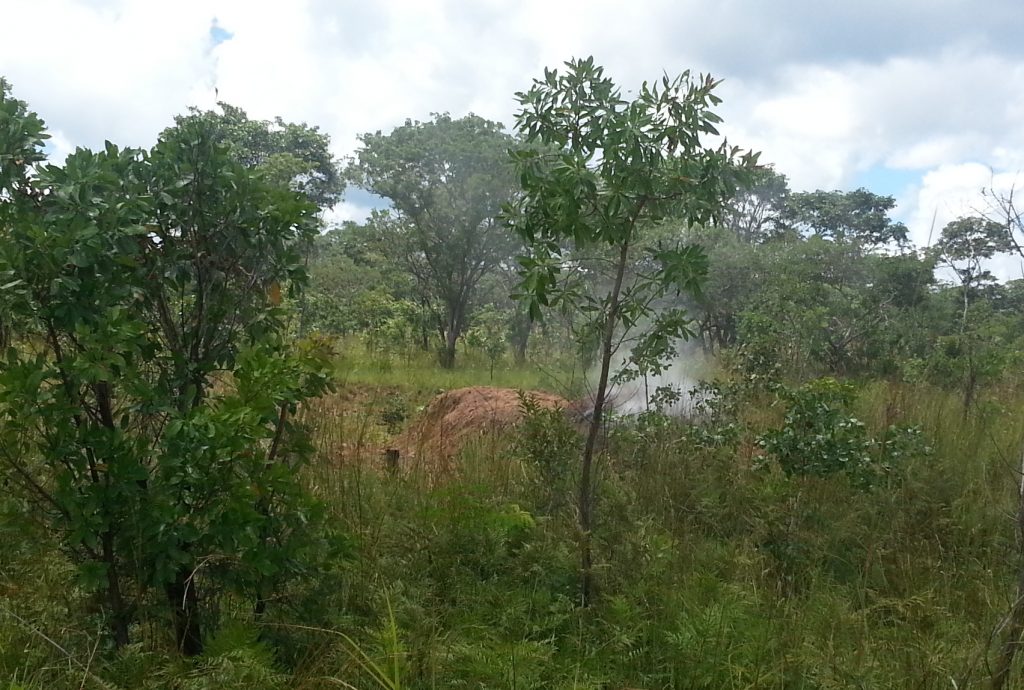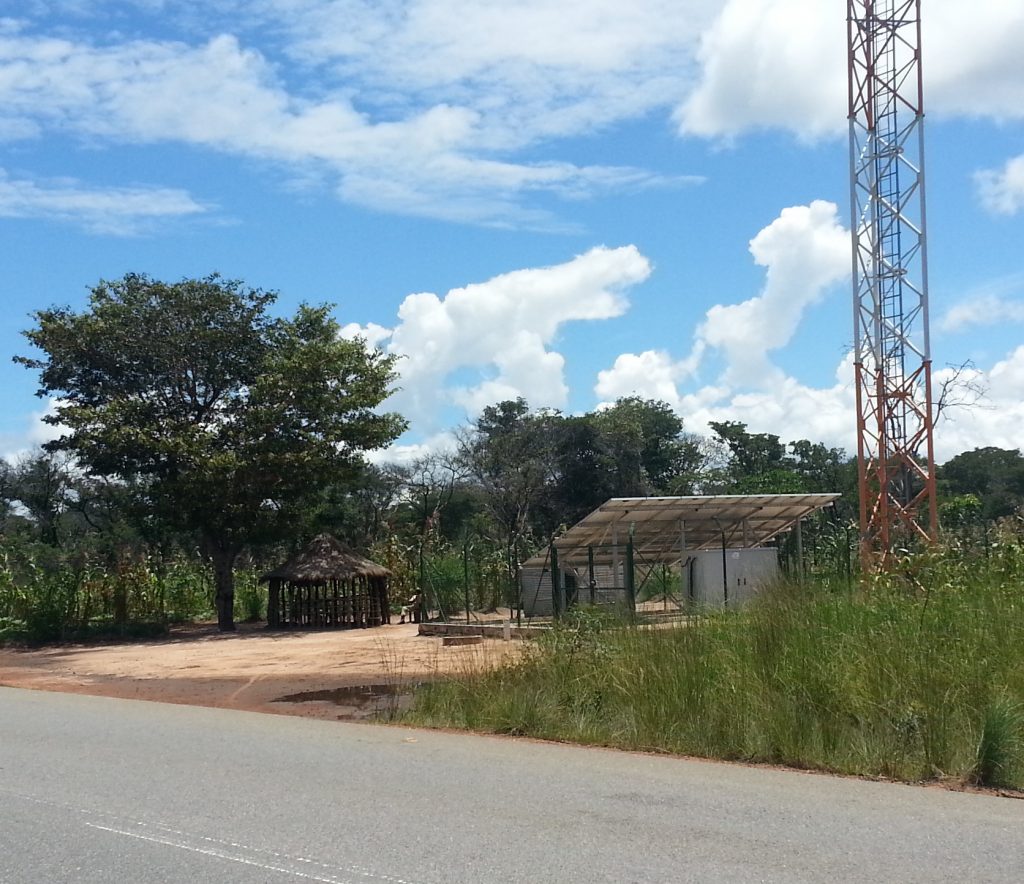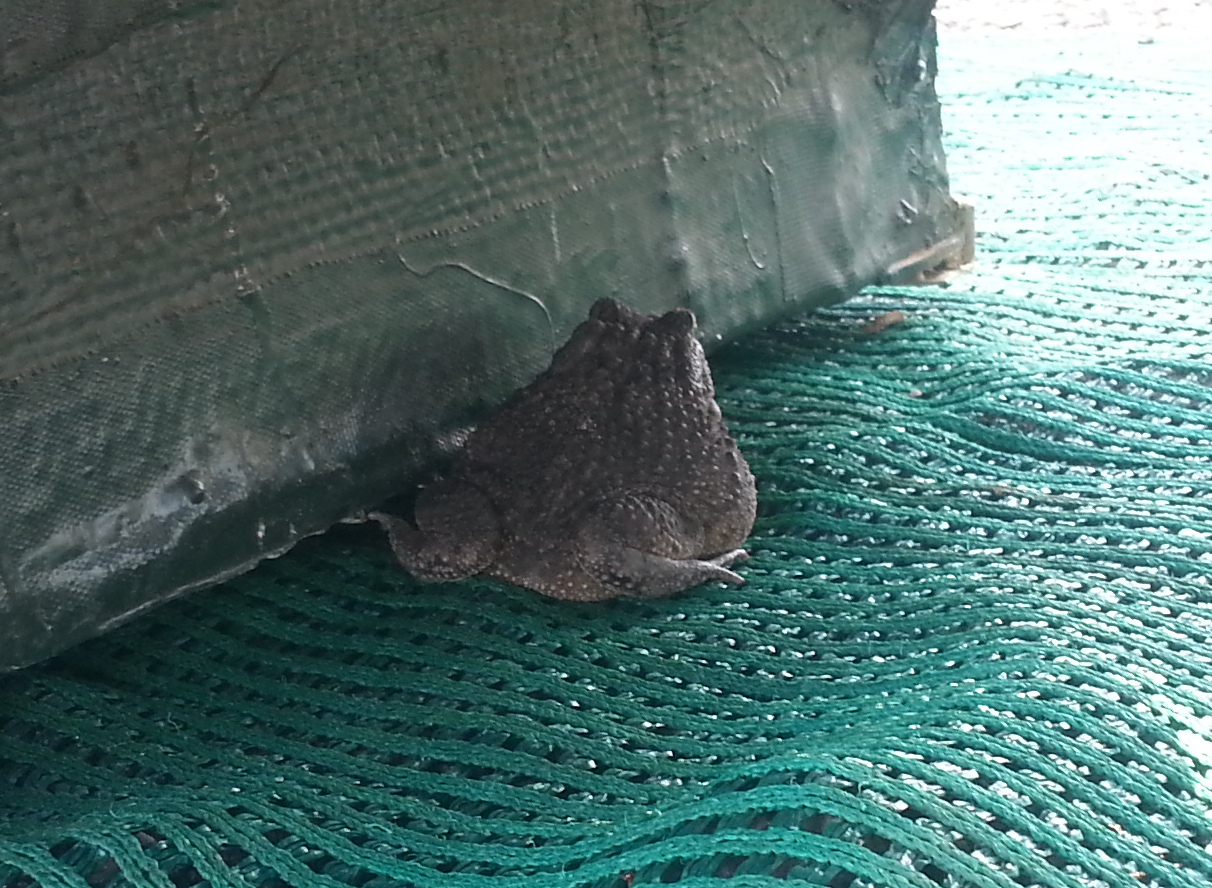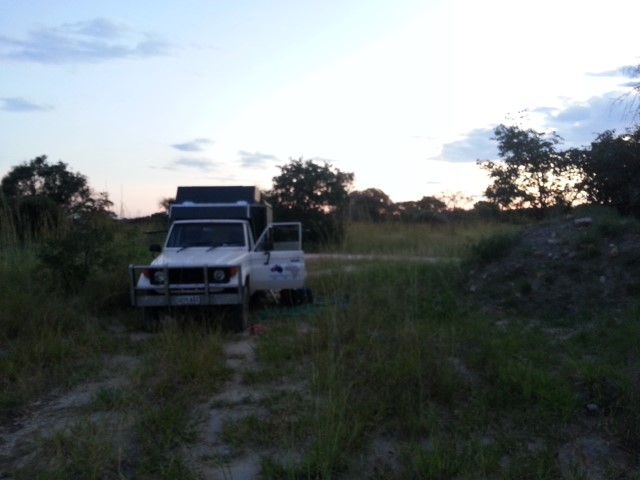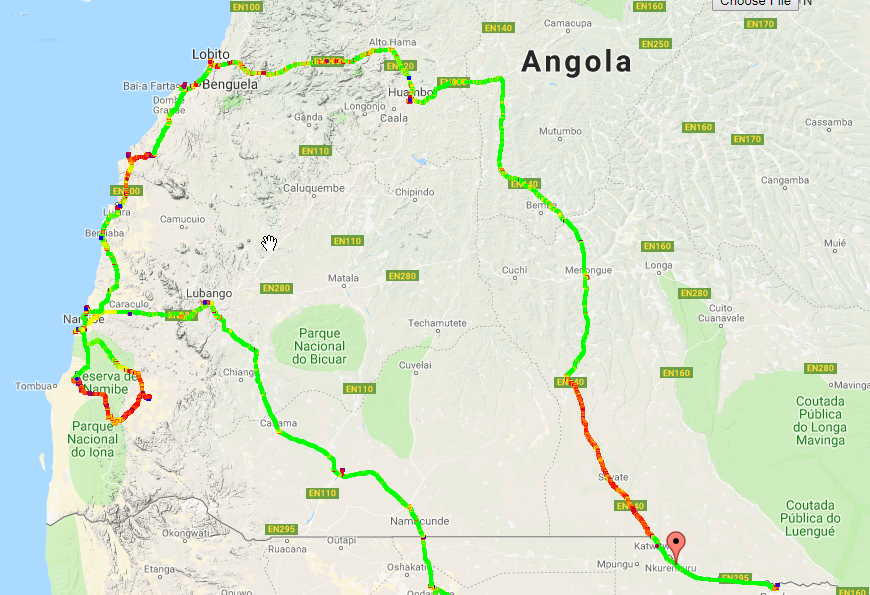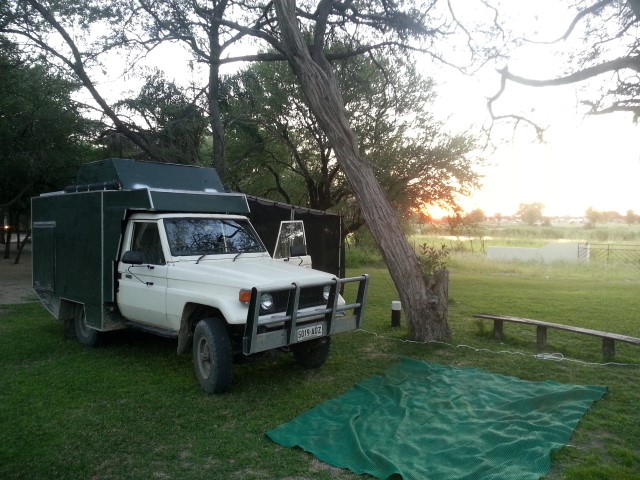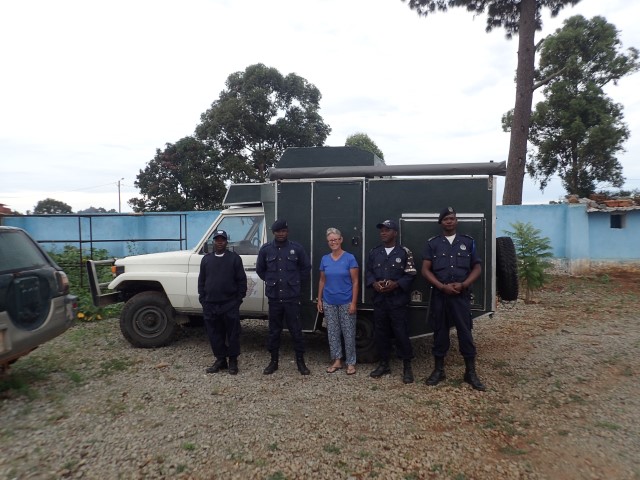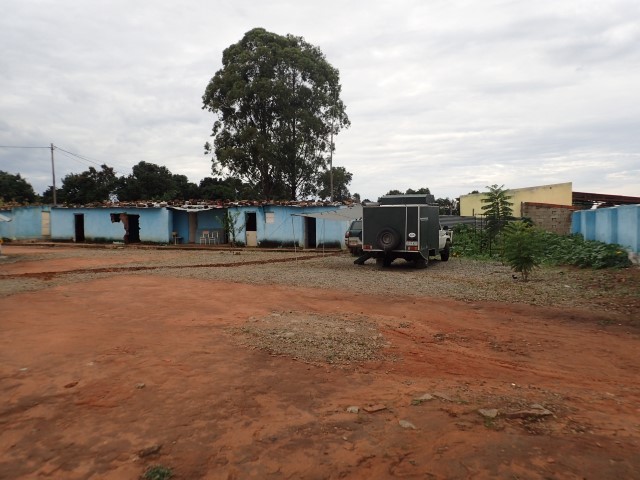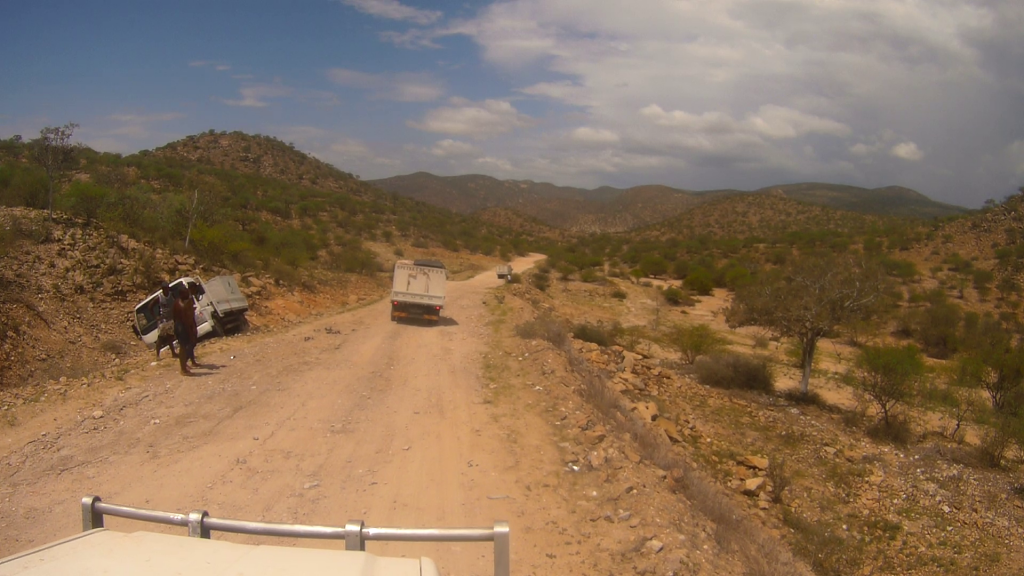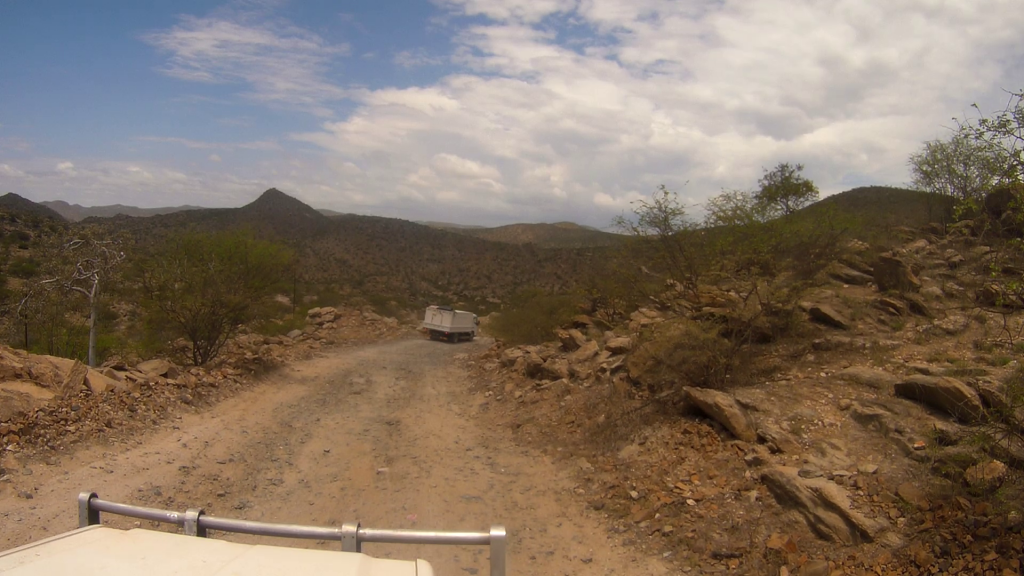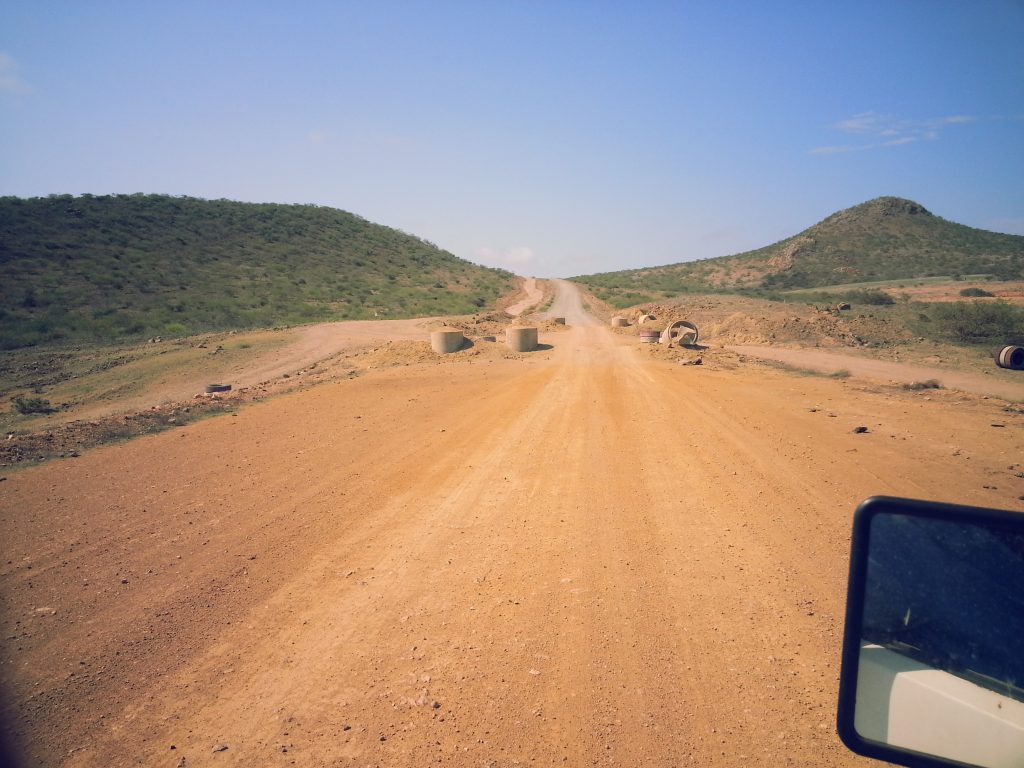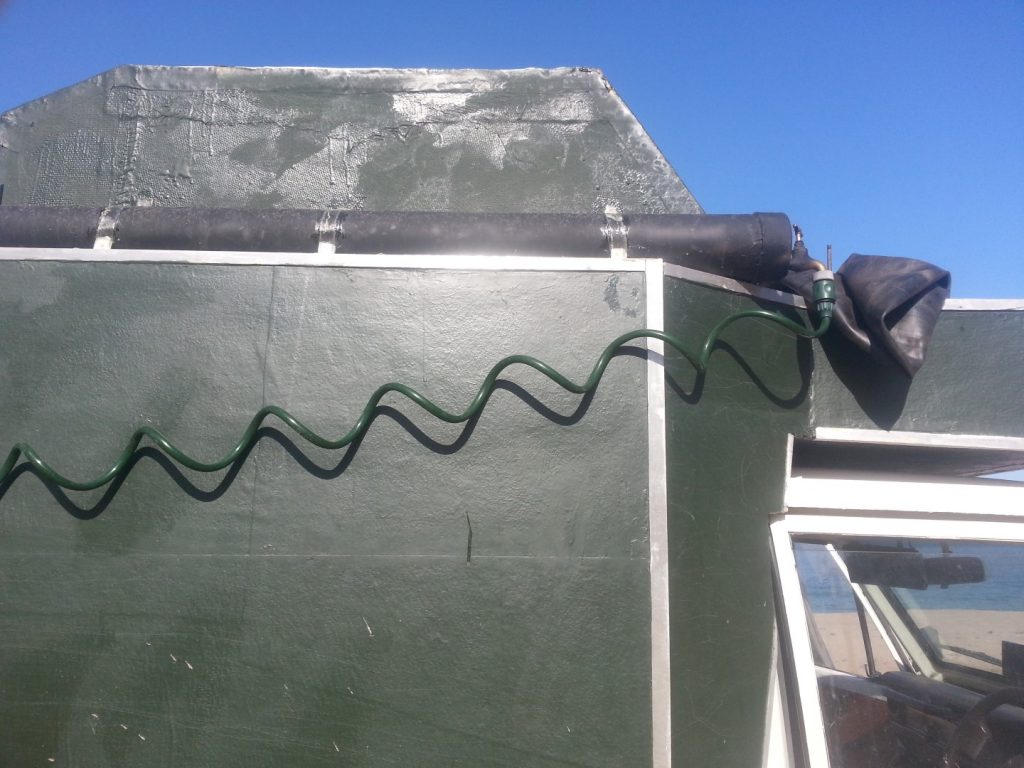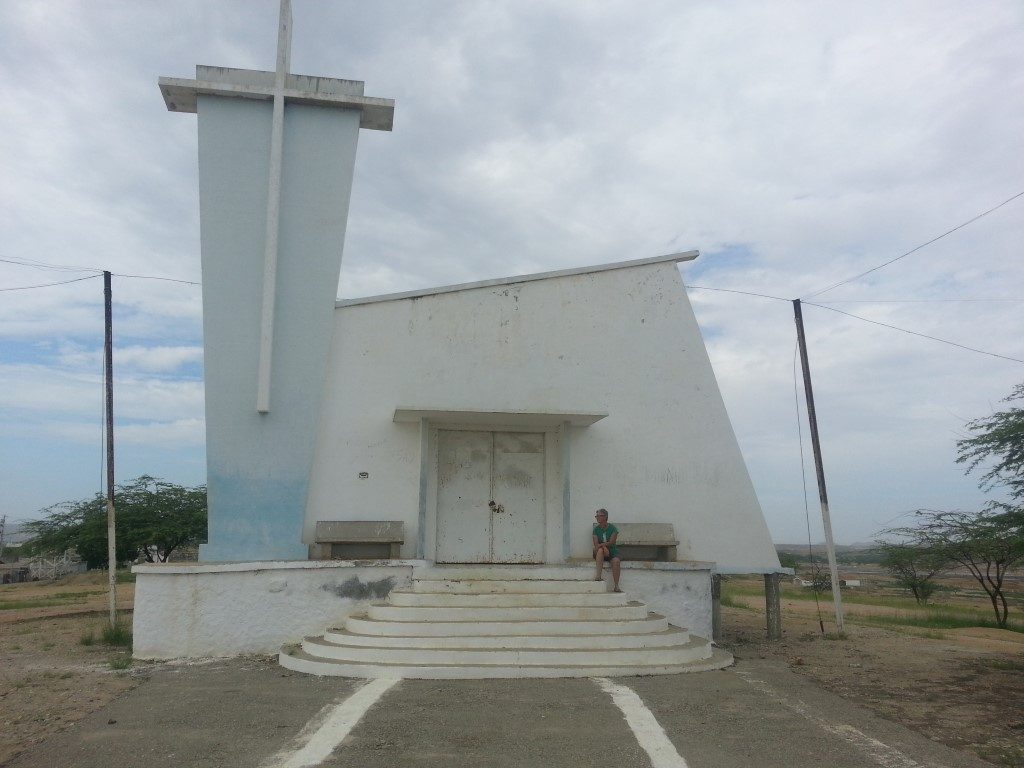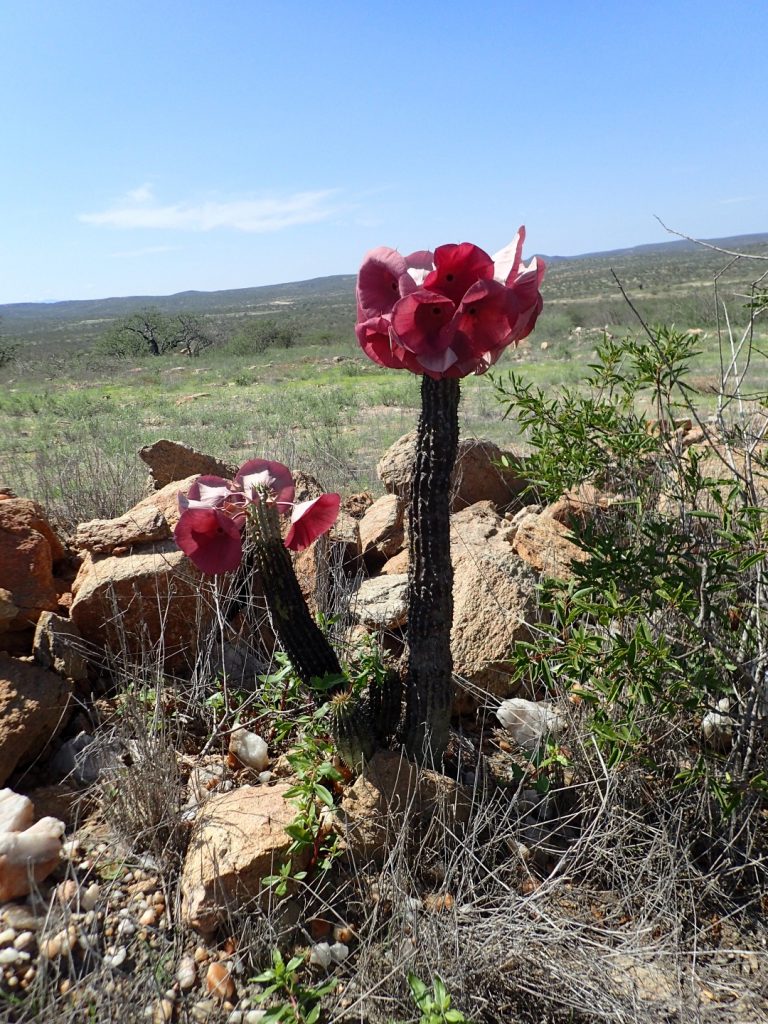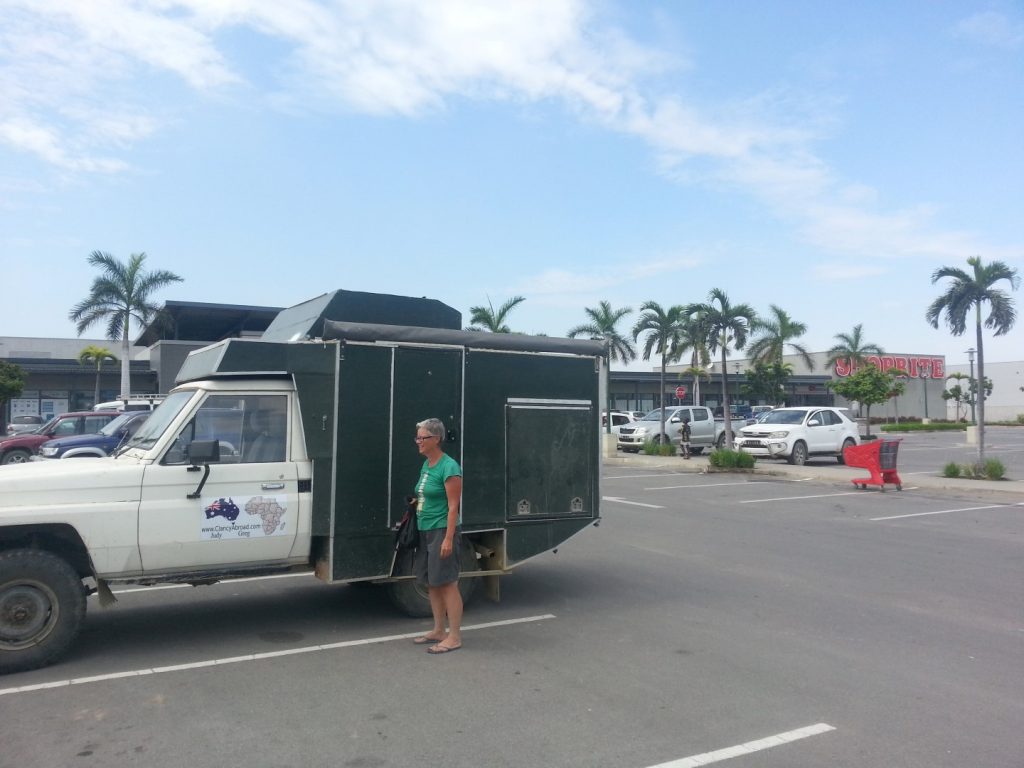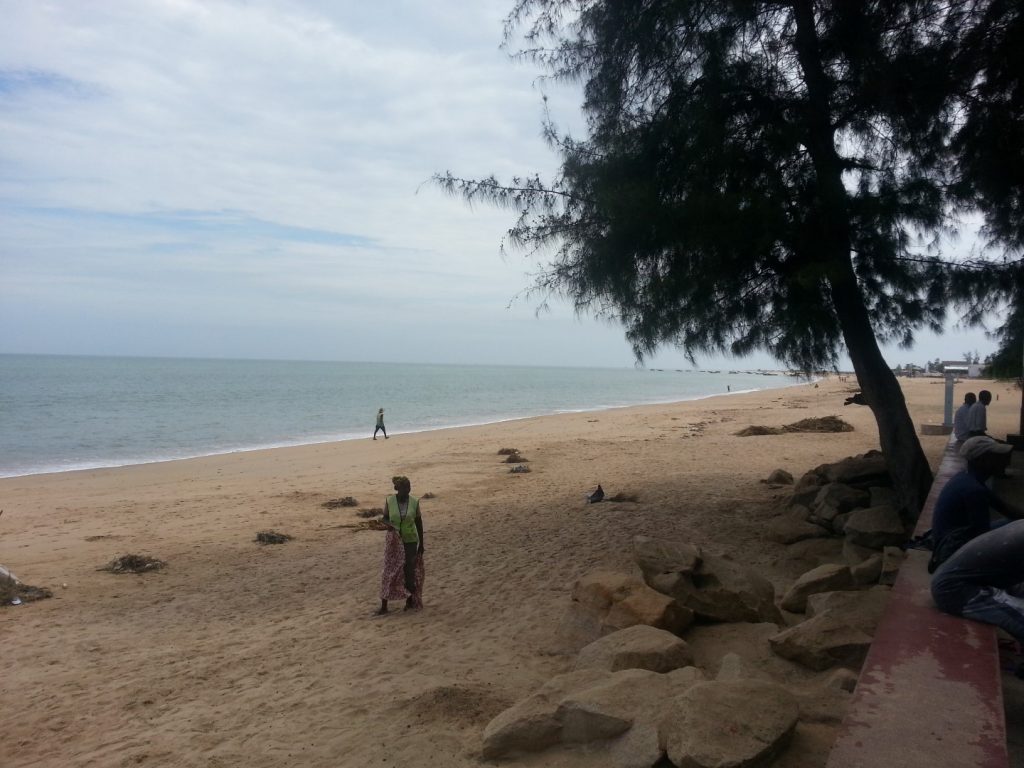Wouldn’t that be a great title for one of Alexander McCall Smith’s Sunday Philosophy Club Series books? Perhaps he could do a cross-over, where Isabel Dalhousie visits Mma Precious Ramotswe in Gaborone, Botswana, and they go off on a safari together; then Precious visits Isabel in the UK and is constantly amazed at the grey skies and how much it rains there.
Anyway …. when we were fitting out Clancy the Camper, we decided that marine carpet would be good for most of the vertical and horizontal surfaces as it would decrease the amount of condensation in our living space. It’s worked really well. We do still get some condensation on the ceiling, but in the current climate with humidity around 10% most of the time, it evaporates very quickly.
Something we hadn’t thought about when deciding on marine carpet is how fantastic it is for holding velcro and thus the seemingly endless number of remotes, chargers, sensors, switches and other assorted paraphenalia we have managed to accumulate and stick to the carpet-covered walls. We’ve stuck strips of velcro to the back of the battery charger, fire blanket, at least 4 remote controls for lights, a thermometer, a USB charger or two (and many of the charging cables come with their own thin double-sided velcro as well), the carbon monoxide sensor, 2 small banana boxes full of miscellanea and probably a couple more things I can’t see at the moment and have forgotten about. We also have a fridge temperature monitoring system, but it came with magnets on the back, so we also have a couple of strips of metal glued to the carpet. Otherwise, the sensor would have got the velcro treatment too.
We also use long strips of velcro to hold the bluetooth speaker to the dashboard. We’re currently listening to Jo Nesbo’s latest Harry Hole book, Knife, but only when we’re on sealed roads. Too bouncy when we’re on unsealed roads and tracks.
There are 2 large storage spaces in Clancy’s living space – a short, wide area at the front and a taller, wide area at the back. By some minor miracle, I found some fabric-sided storage boxes at Ikea which are the perfect dimensions to fit in the front storage area. We each have one for our clothes and there’s a bit of space left over for our carry-on travel packs and other assorted stuff. We use the taller area at the back for our bedding, mattresses, TV & printer (both stored in their boxes) and various other items. Holding everything in was a bit of a challenge and Greg came up with a couple of timber bars that slot into brackets. We put a rolled-up deflated mattress behind each bar to hold it all back and that works well on sealed roads, but on bumpy tracks the timber would dislodge and a lot of it would fall out. Last time we tried elastic bands which did sort of work most of the time, but this time we’ve got it figured out. Greg bought metres and metres of thin double-sided velcro on Ebay and we wind short pieces of it around the timber bars at each end, with a very long piece wound in a figure-8 pattern in the middle. Nothing has moved, nothing has fallen down so that seems to be a success.
There’s also a strip of the same thin double-sided velcro holding the fire extinguisher in our living area in place. The extinguisher sits in a holder which is screwed to the wall, and the velcro is just to make sure it doesn’t jump out of its holding bracket.
